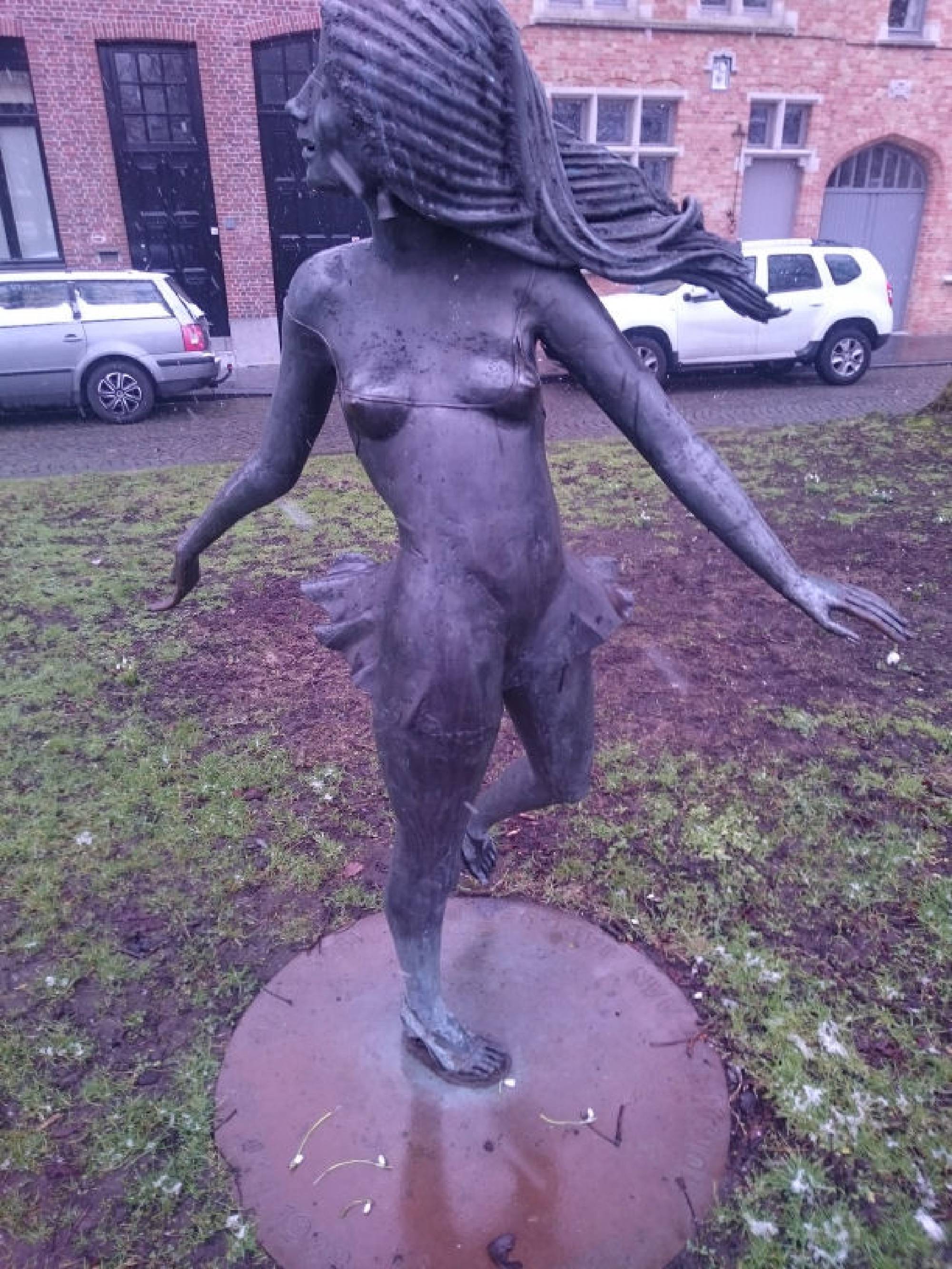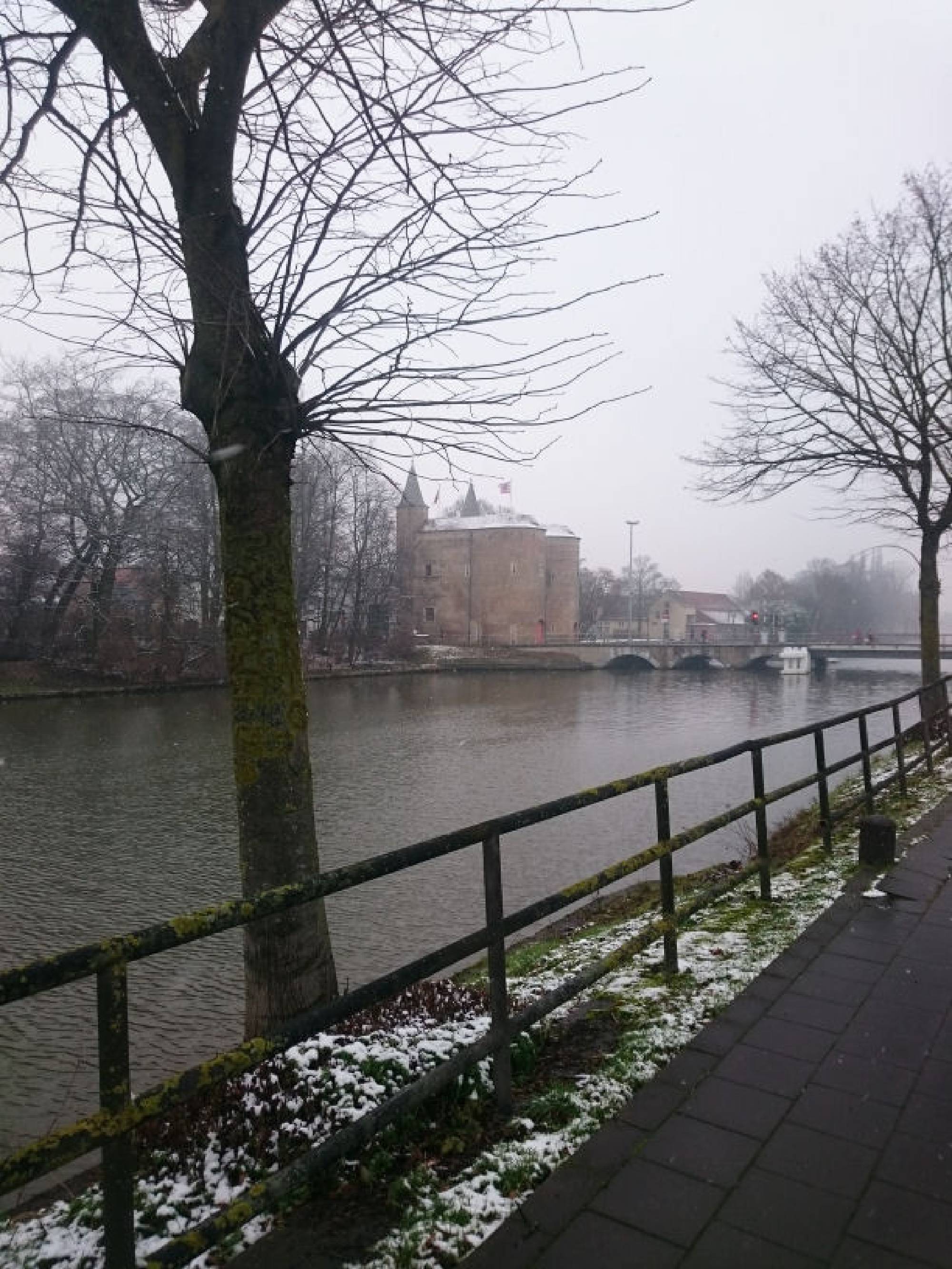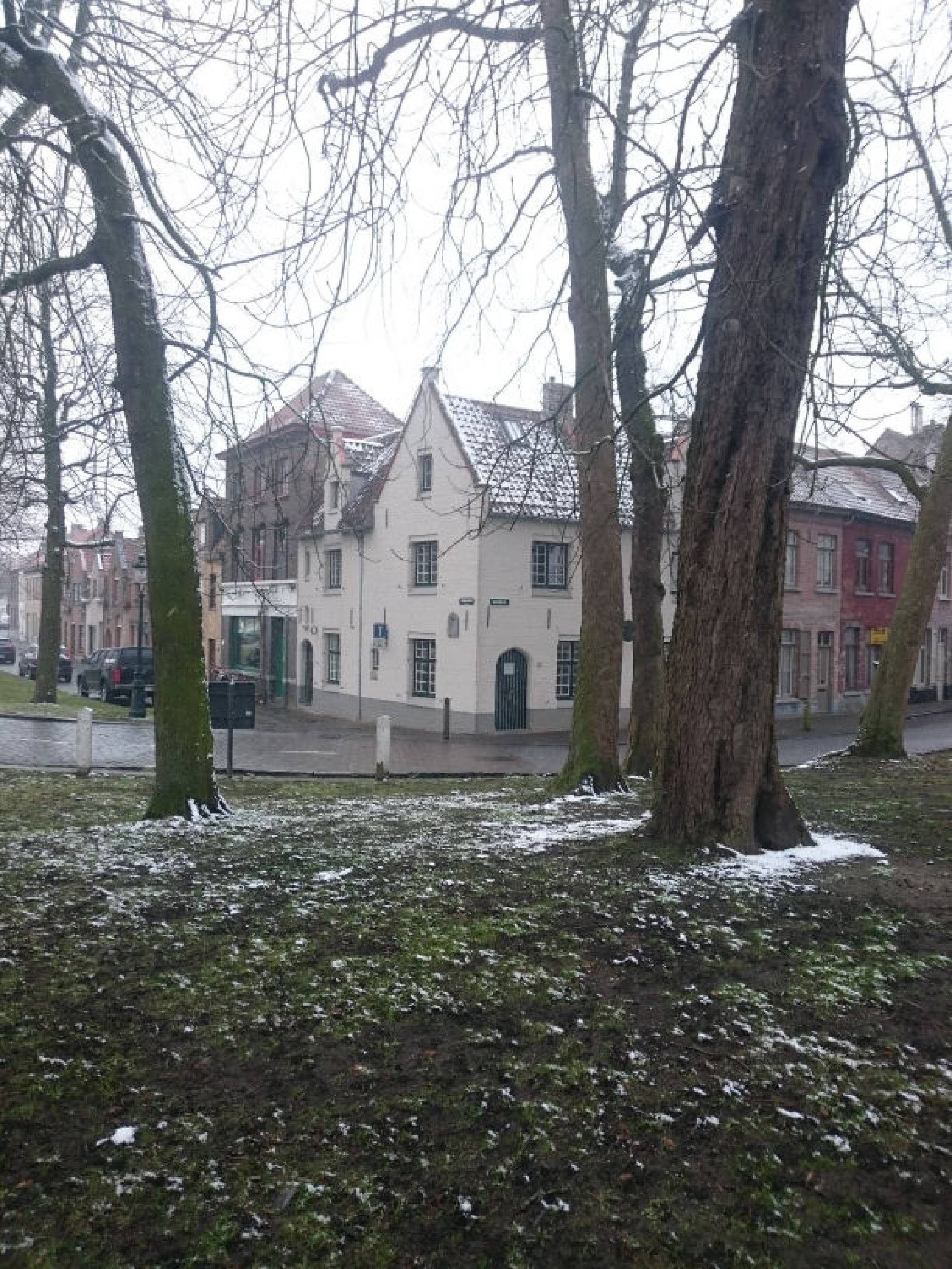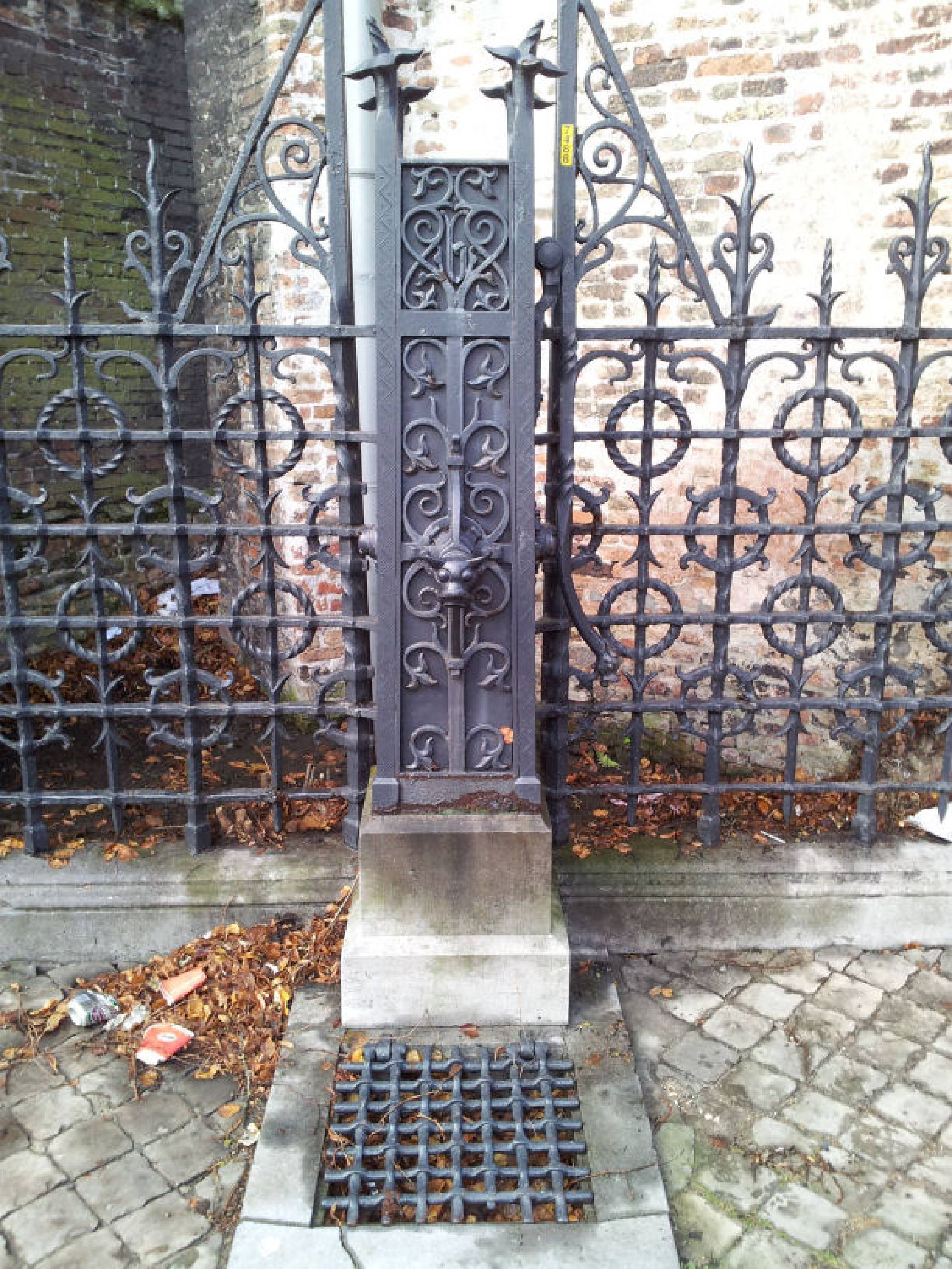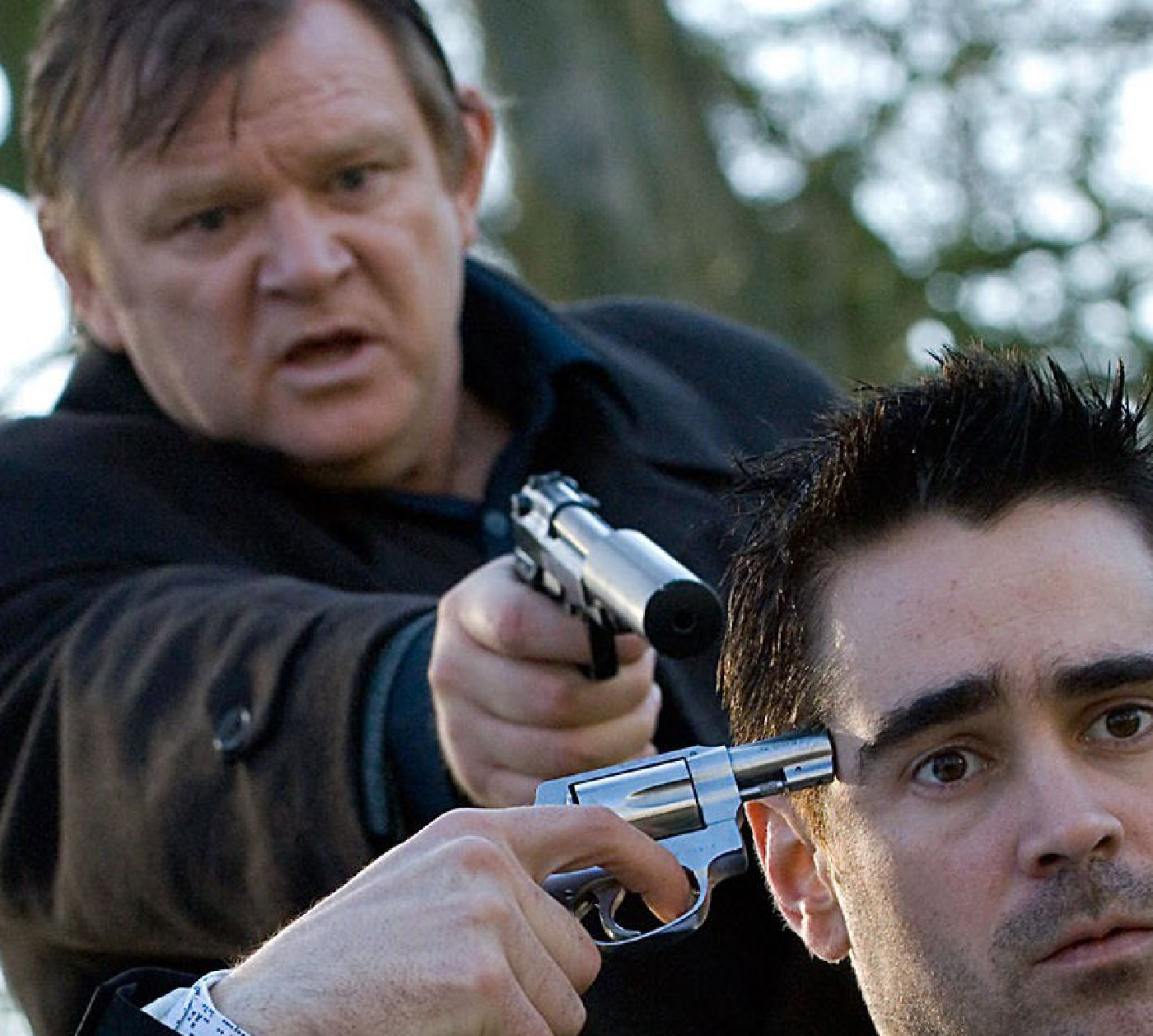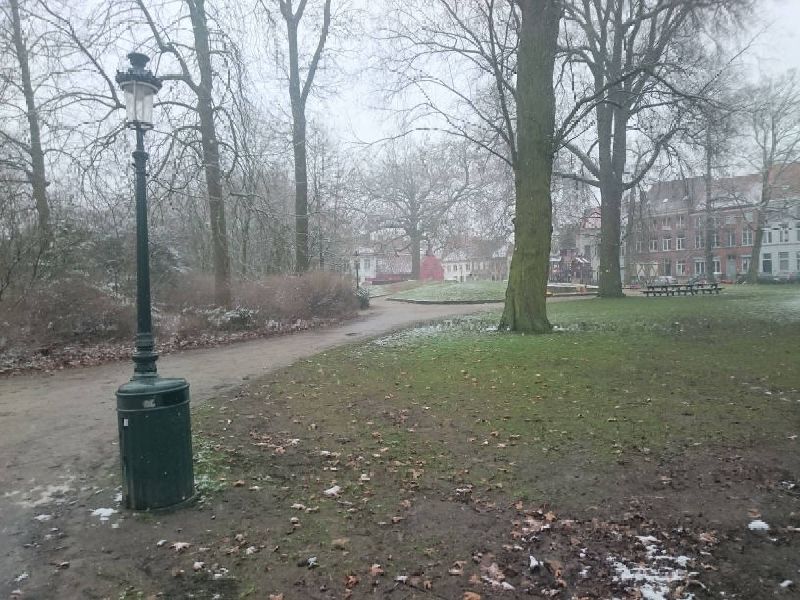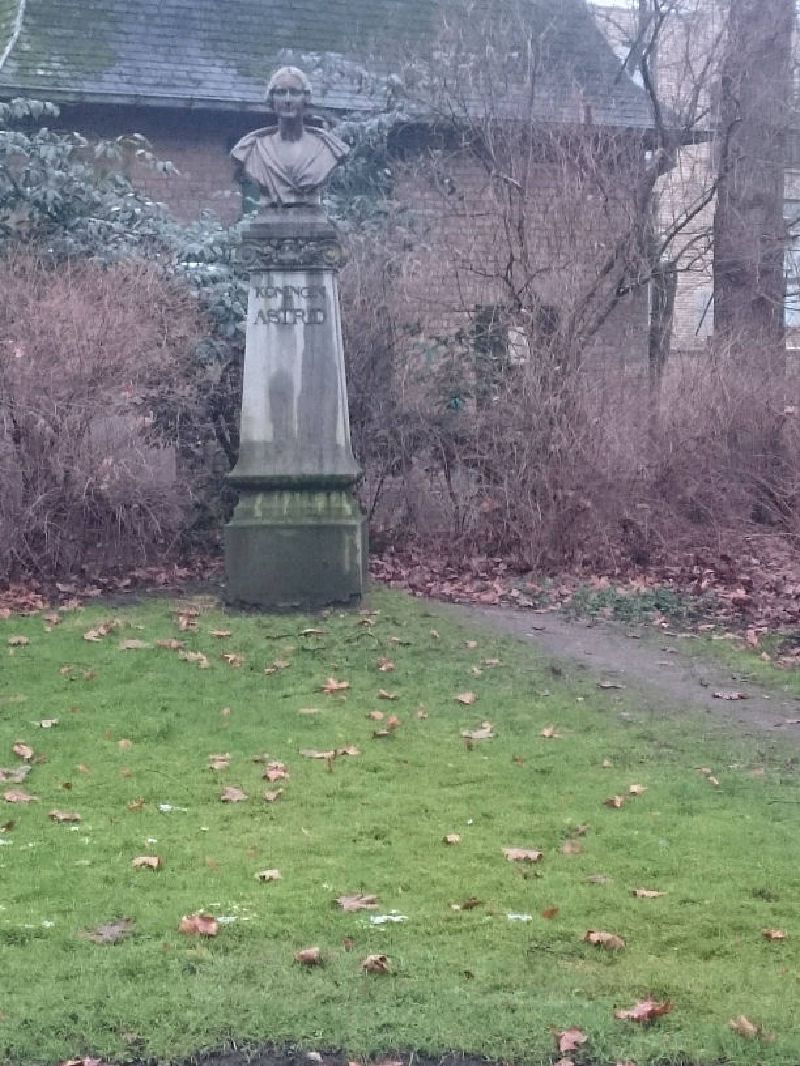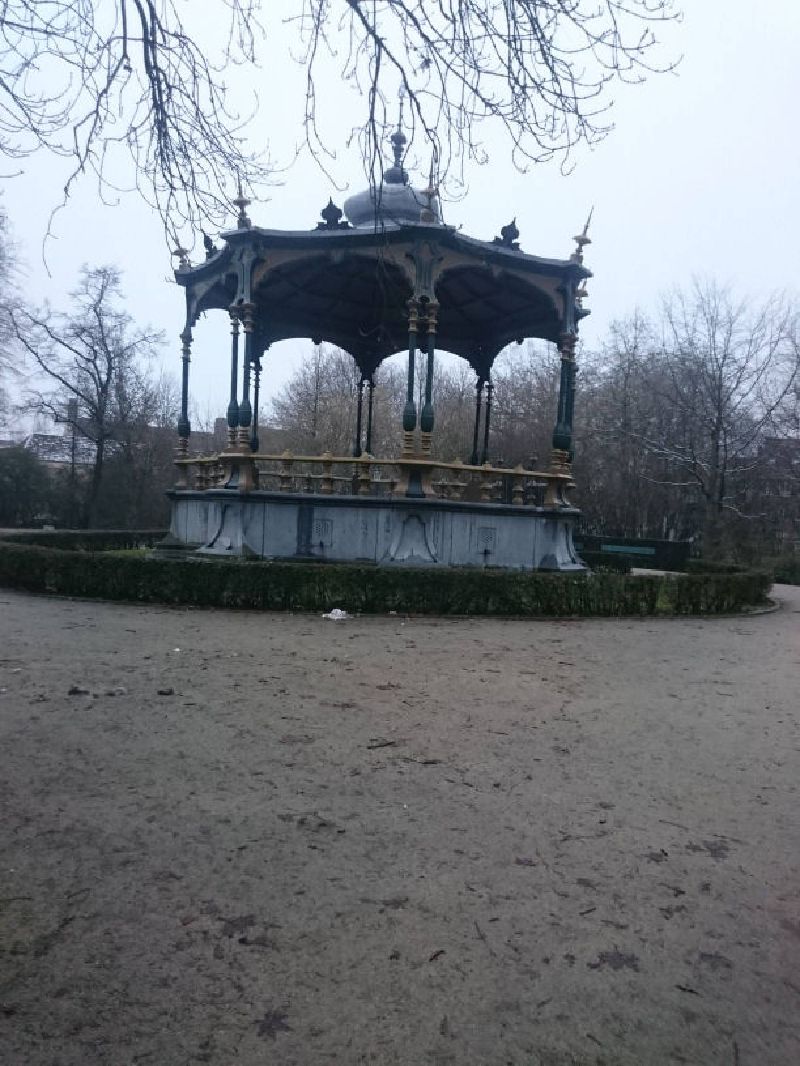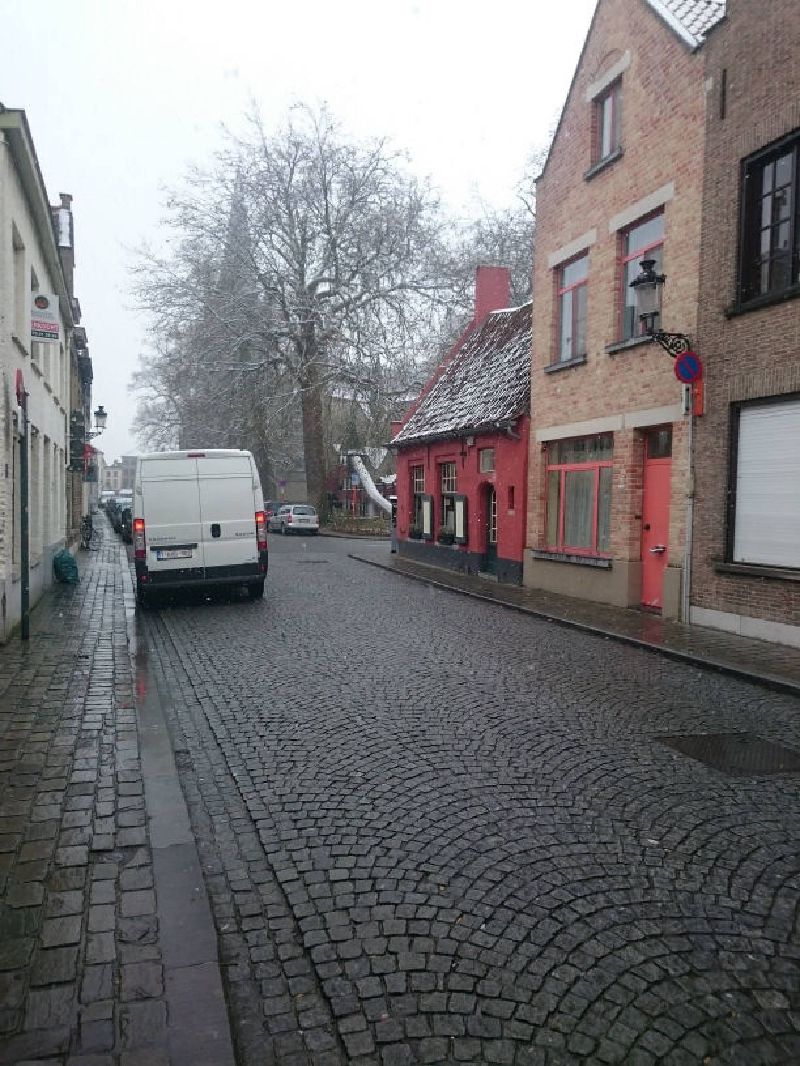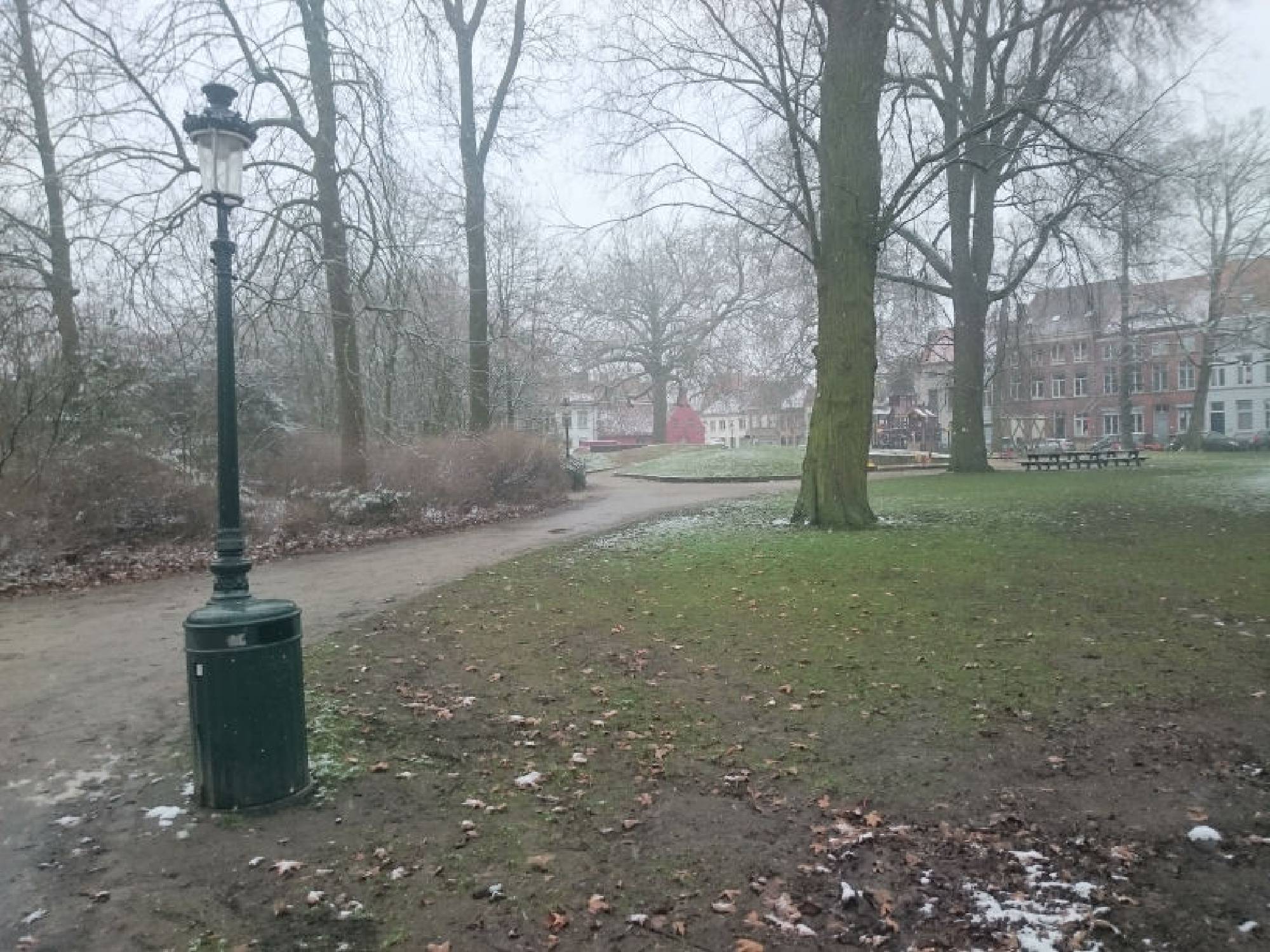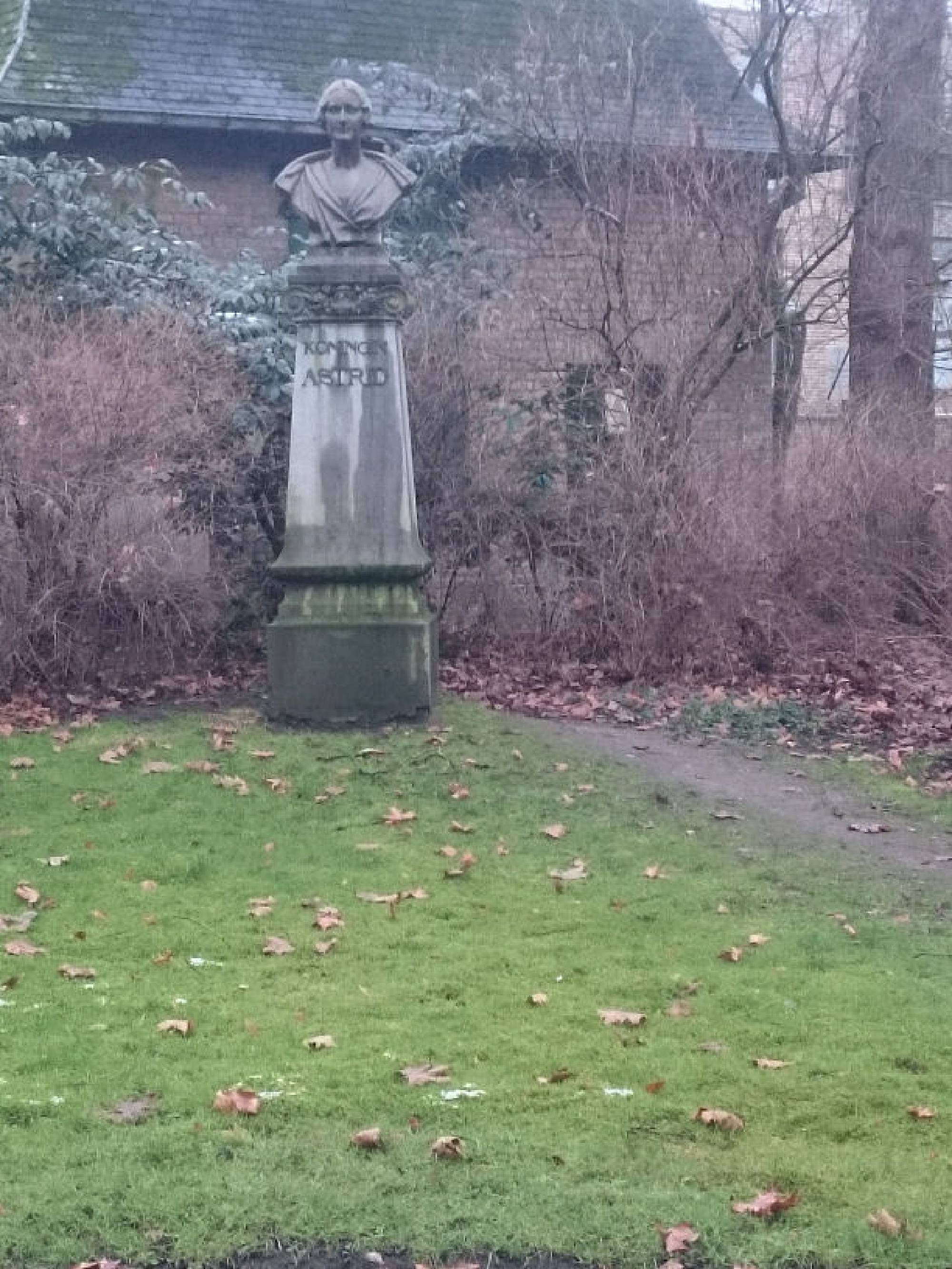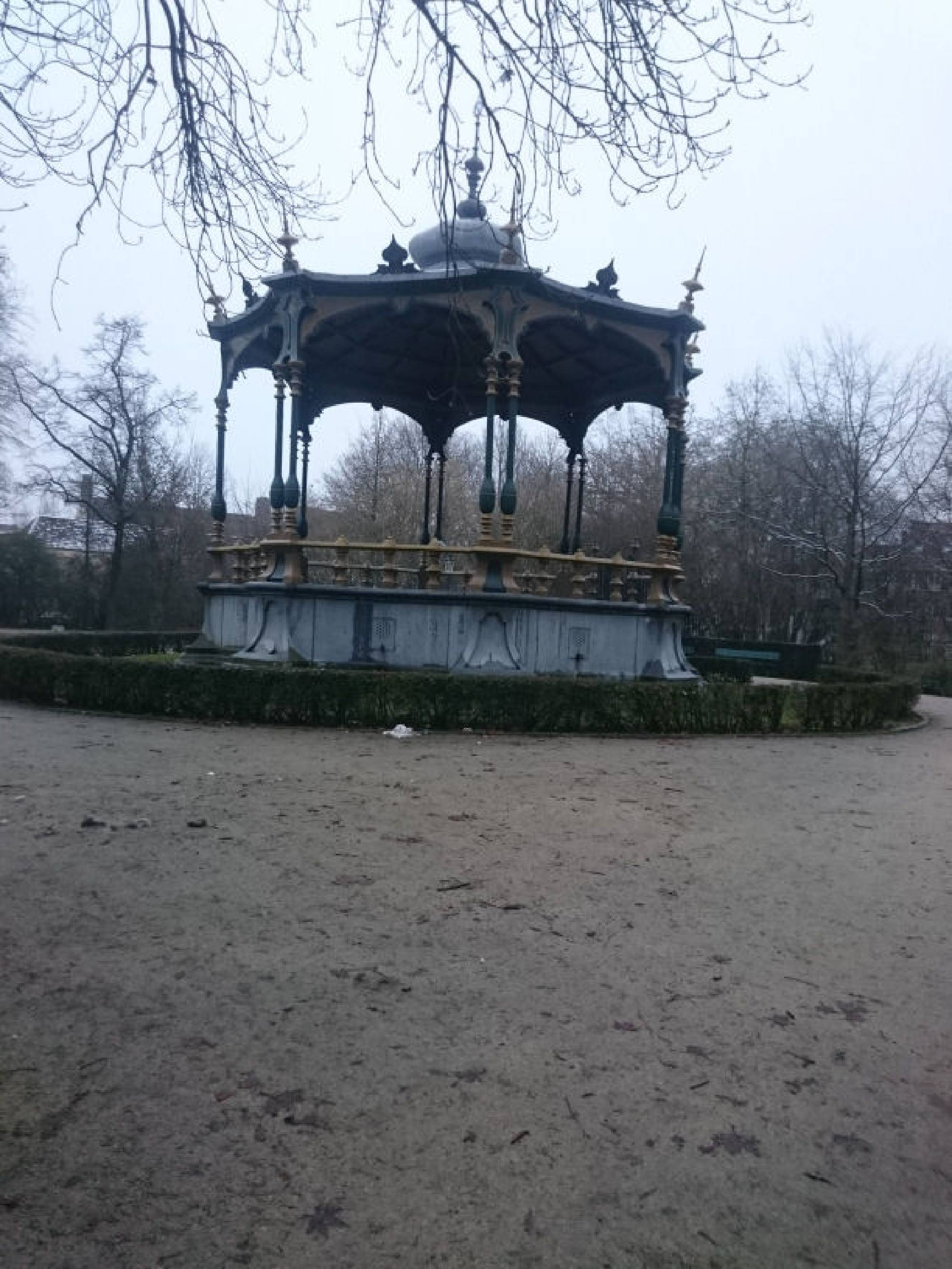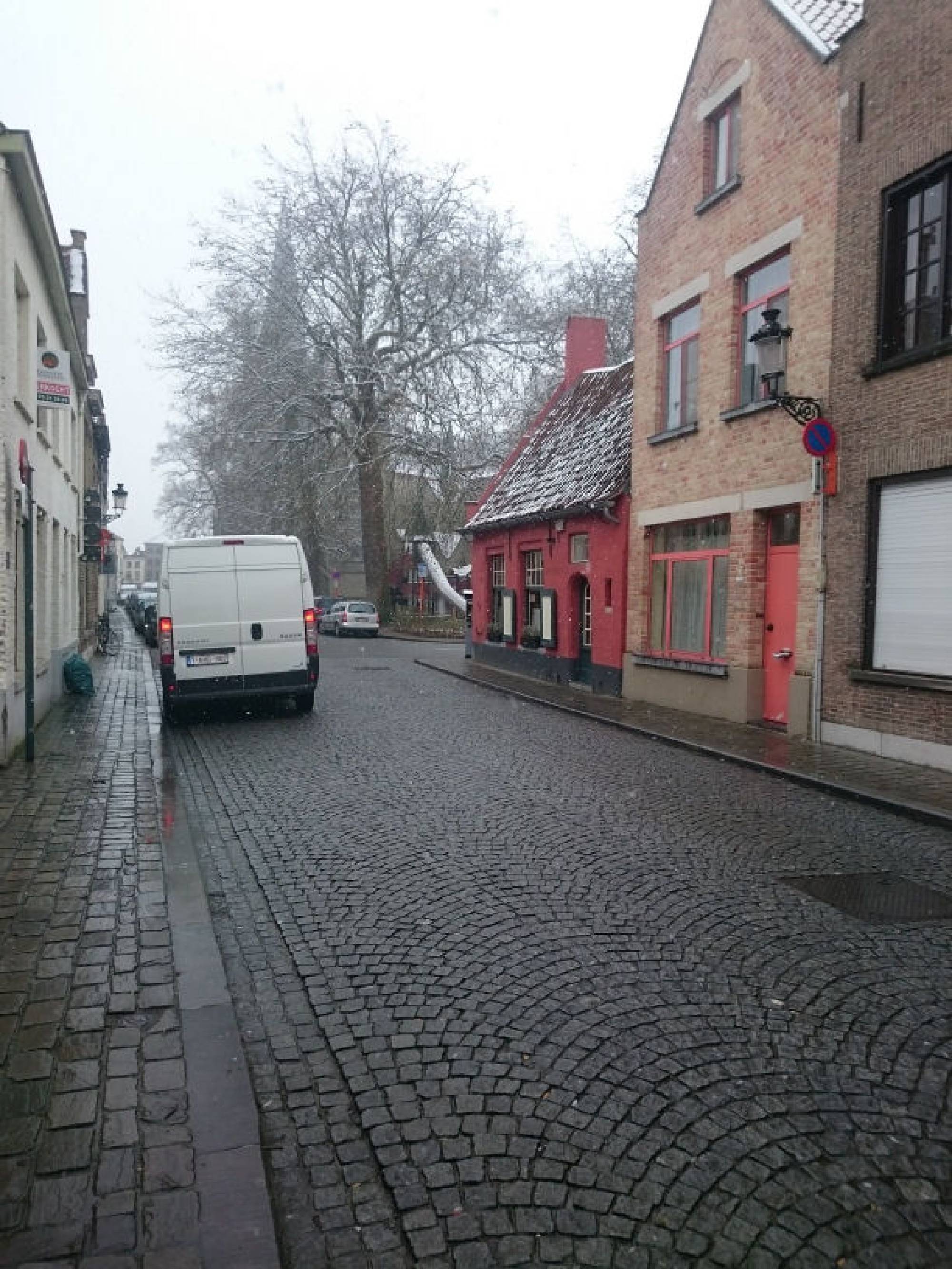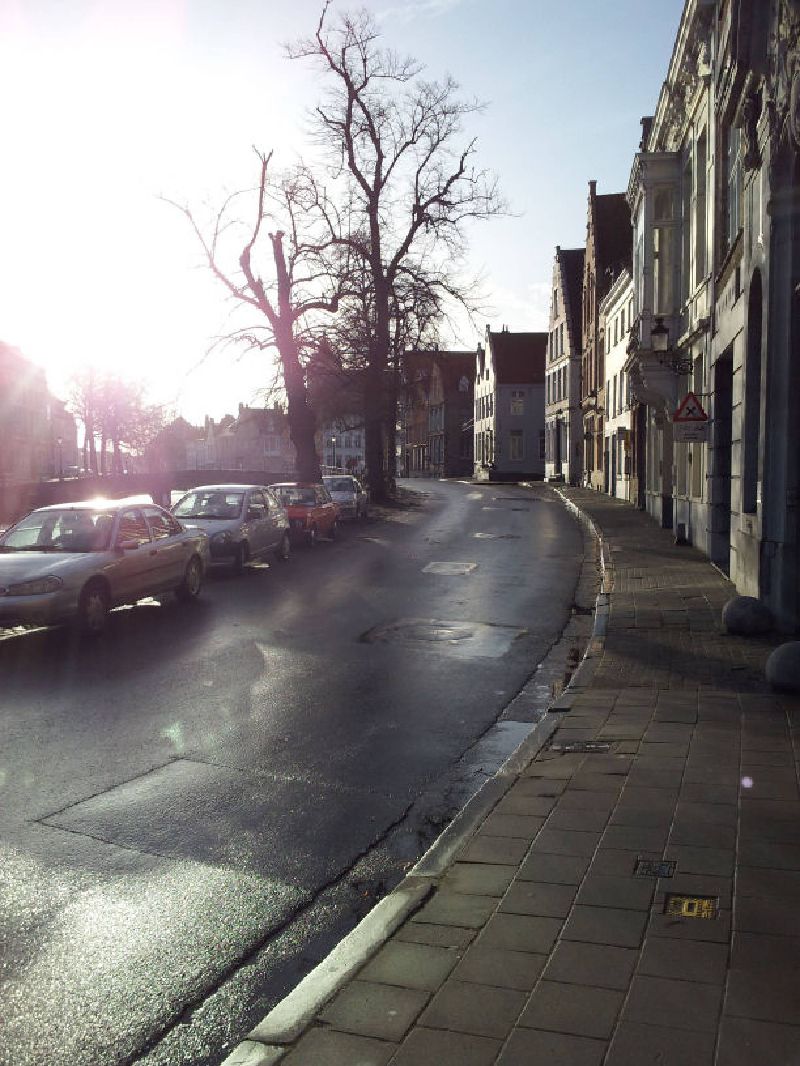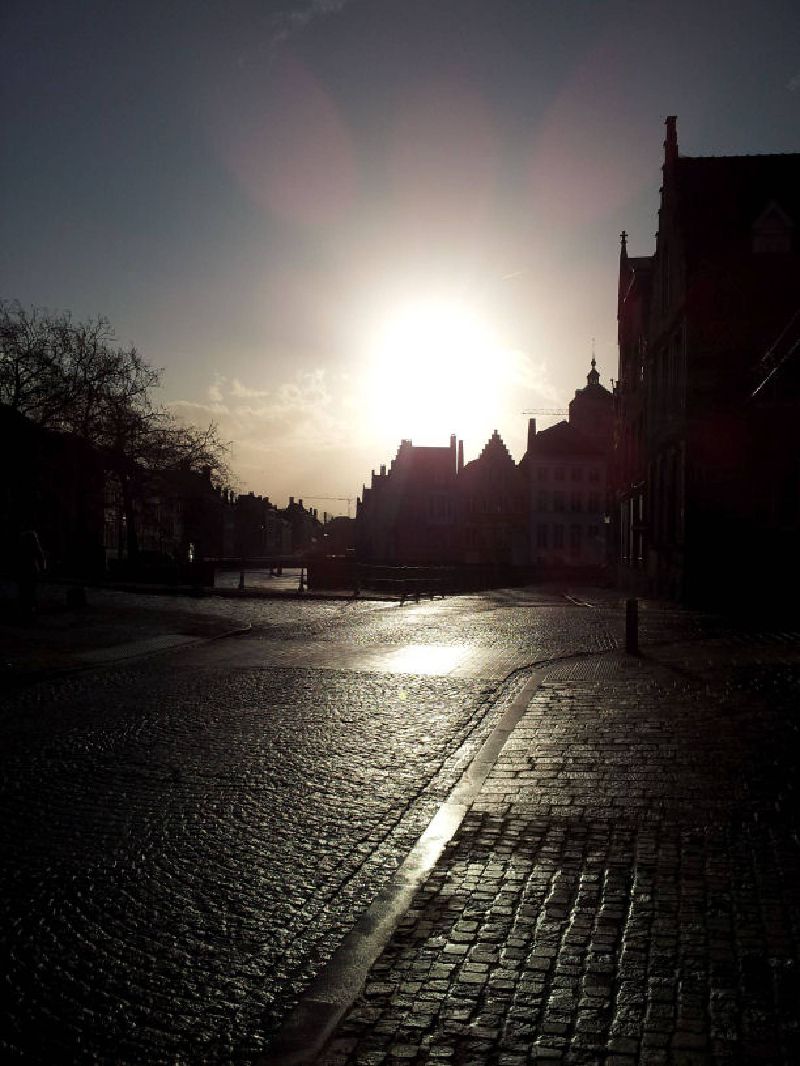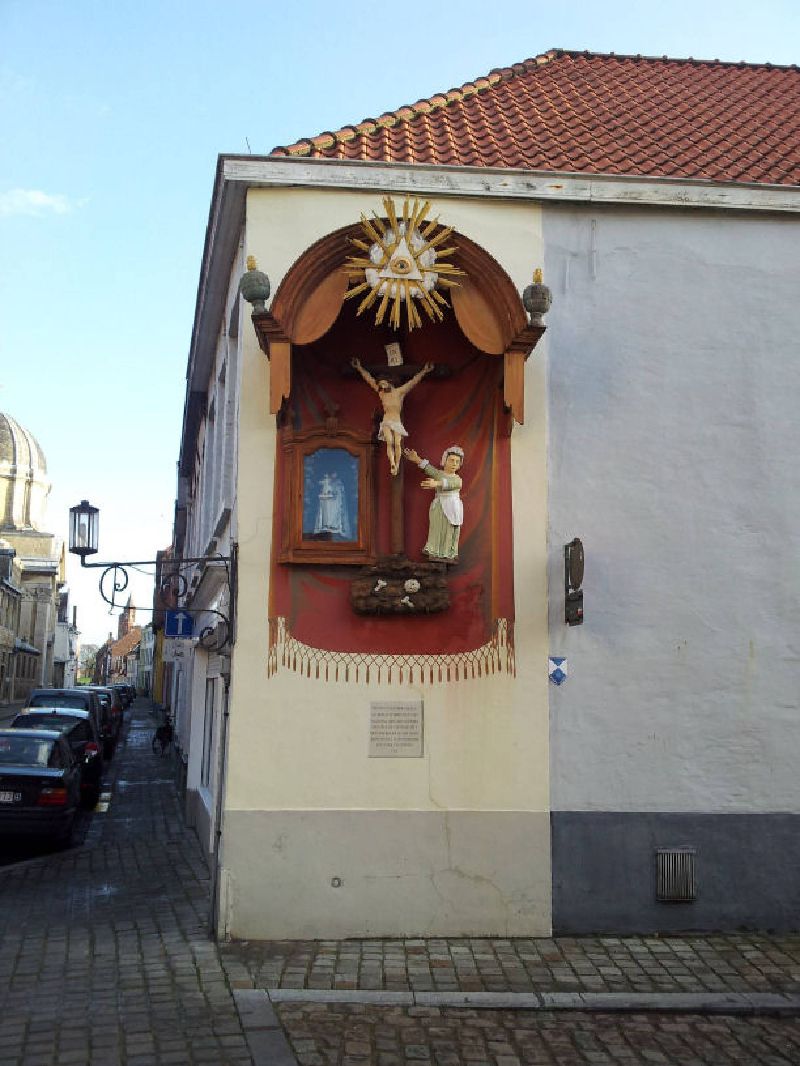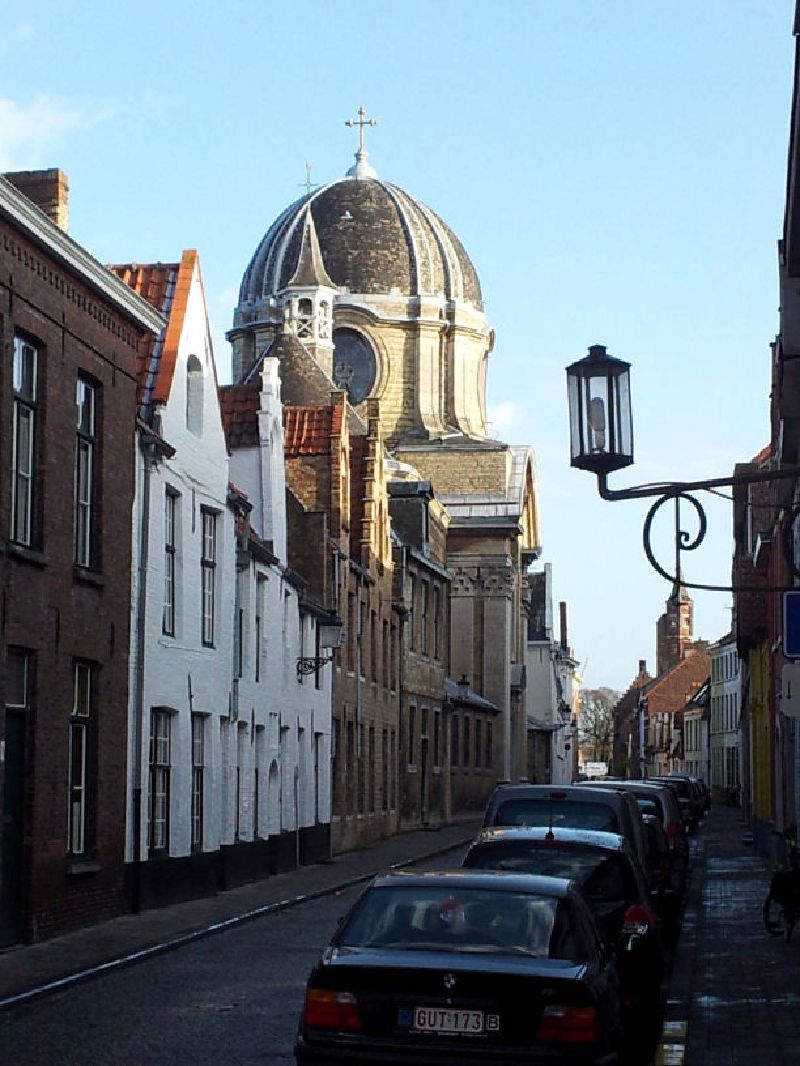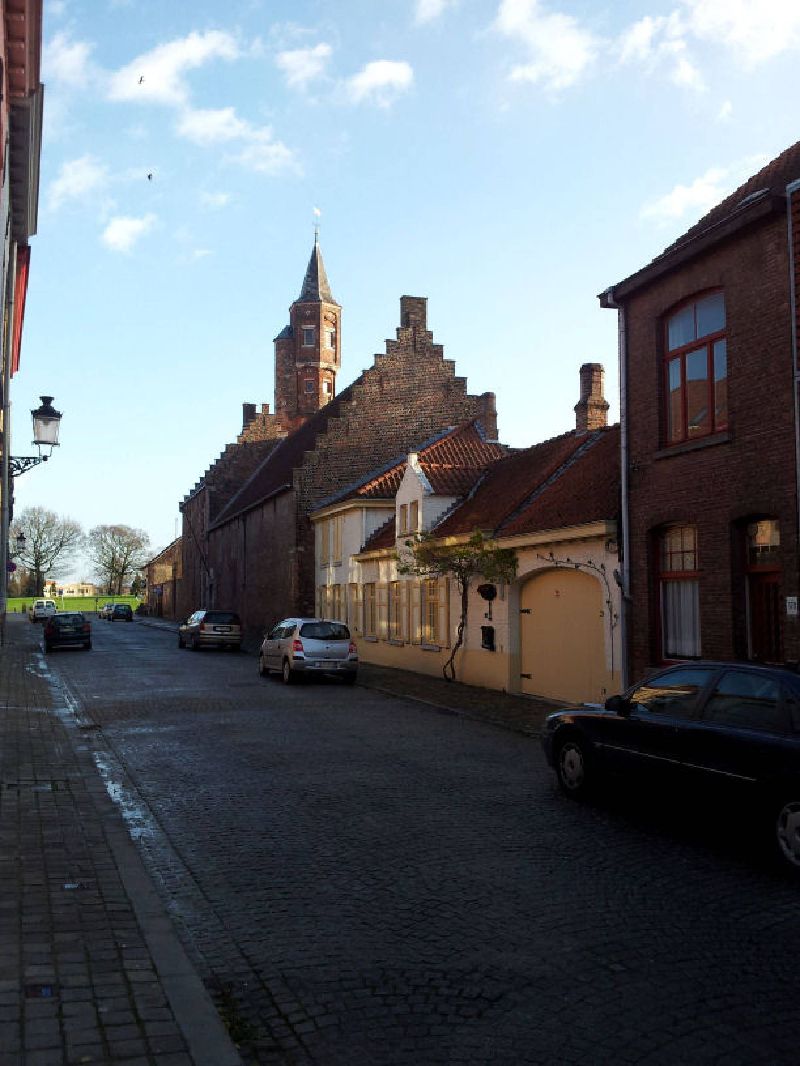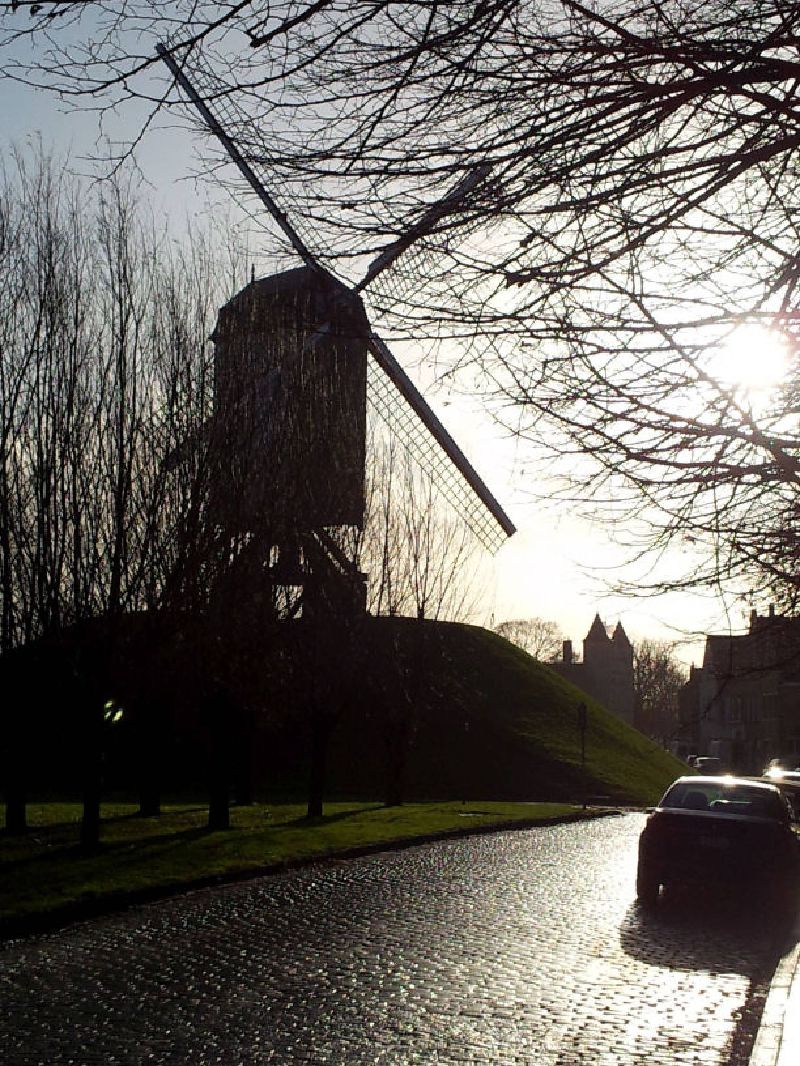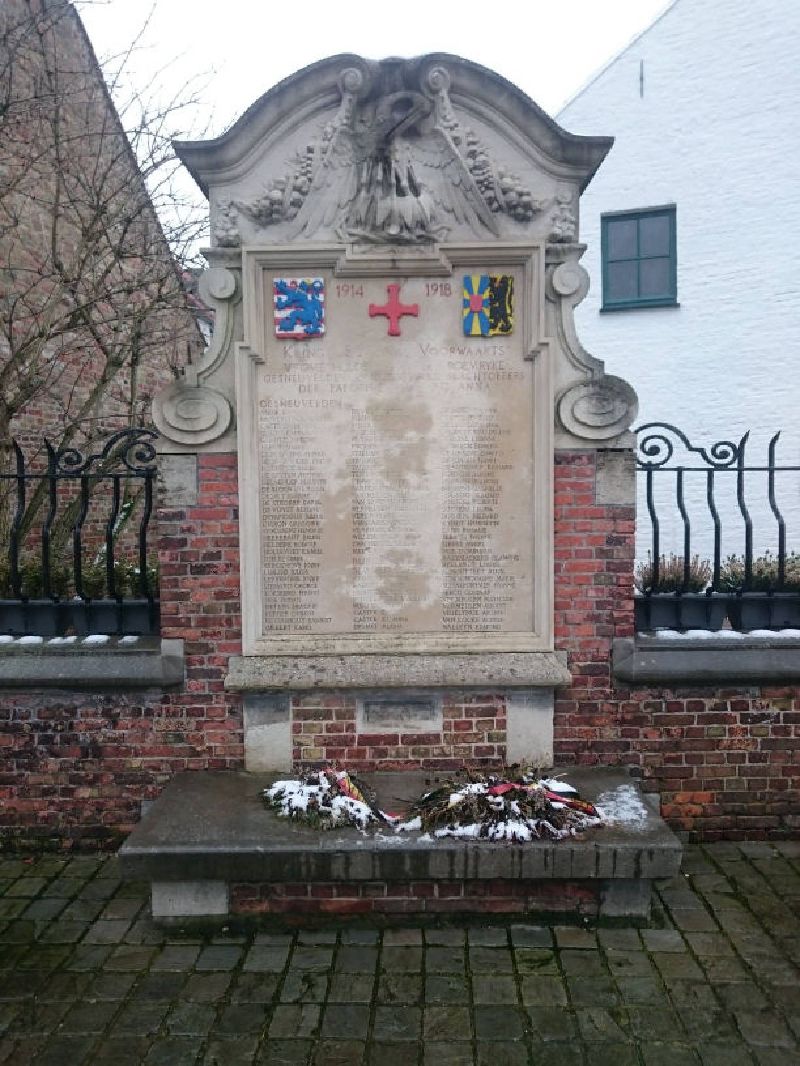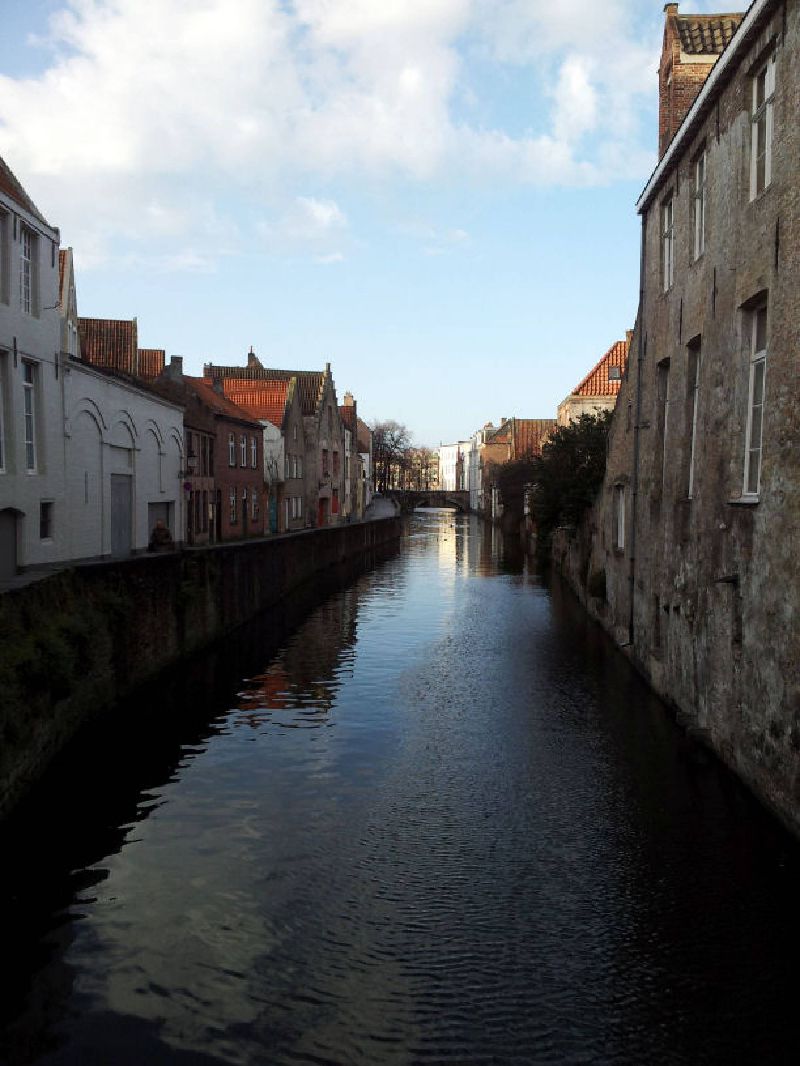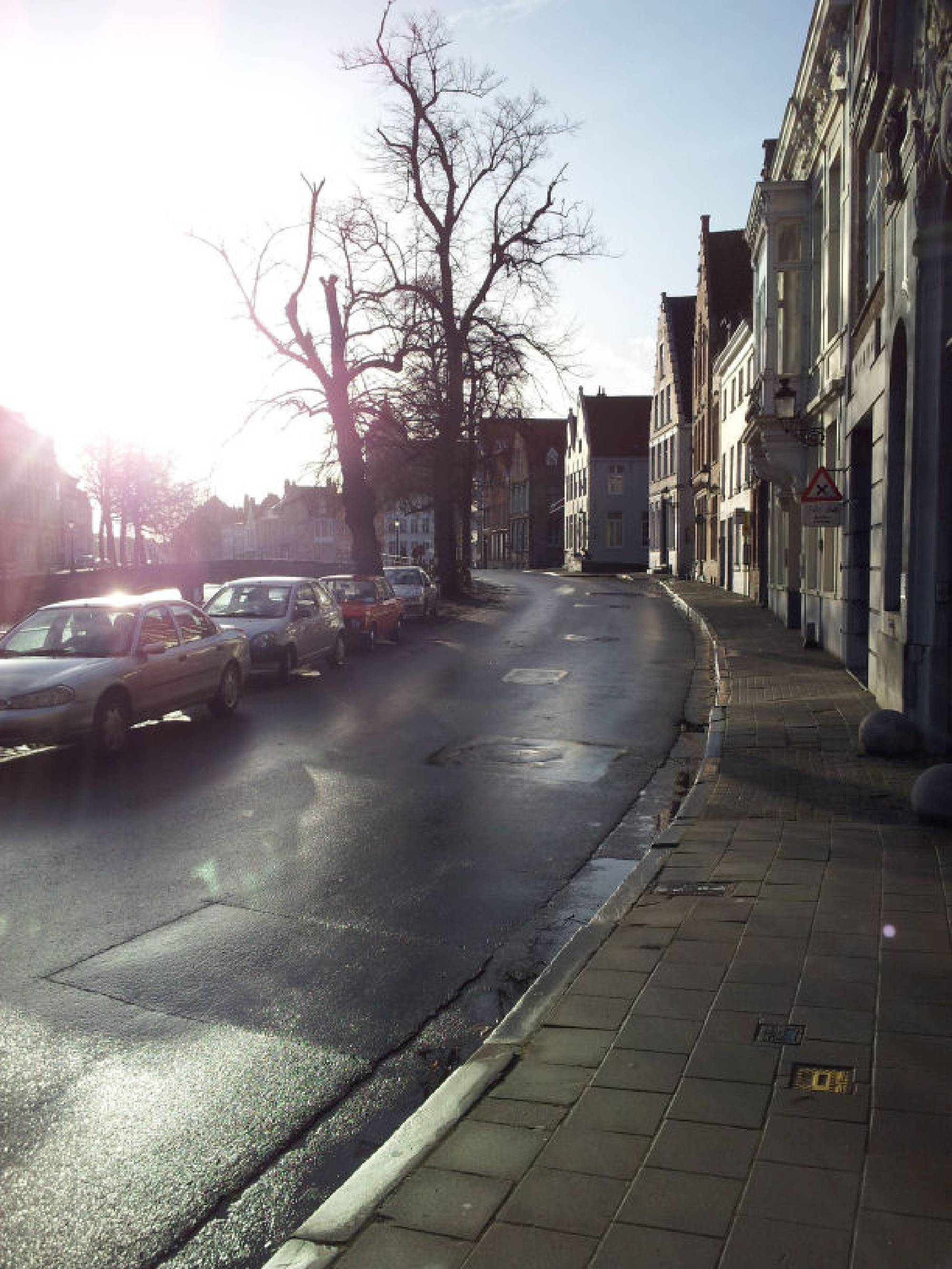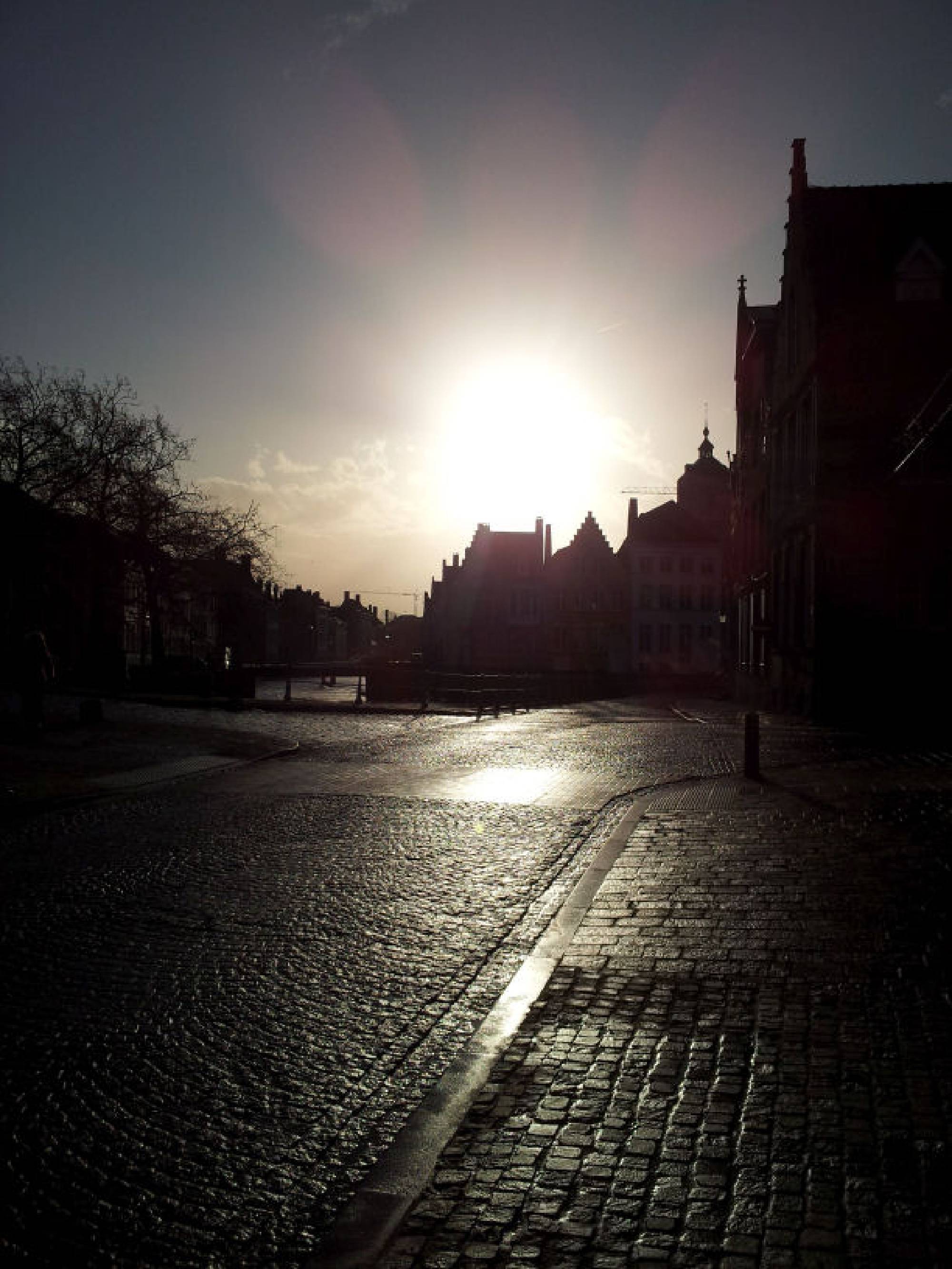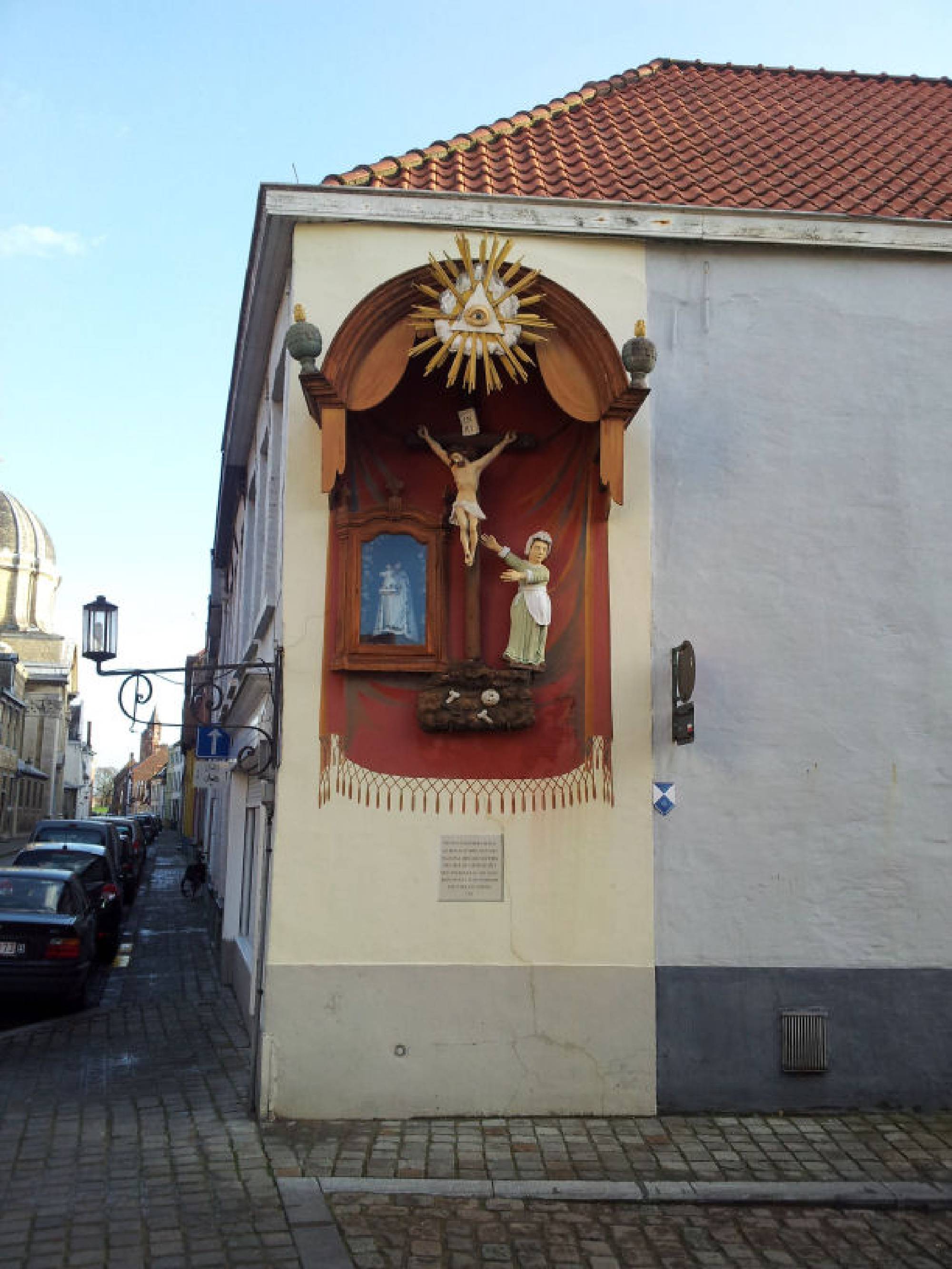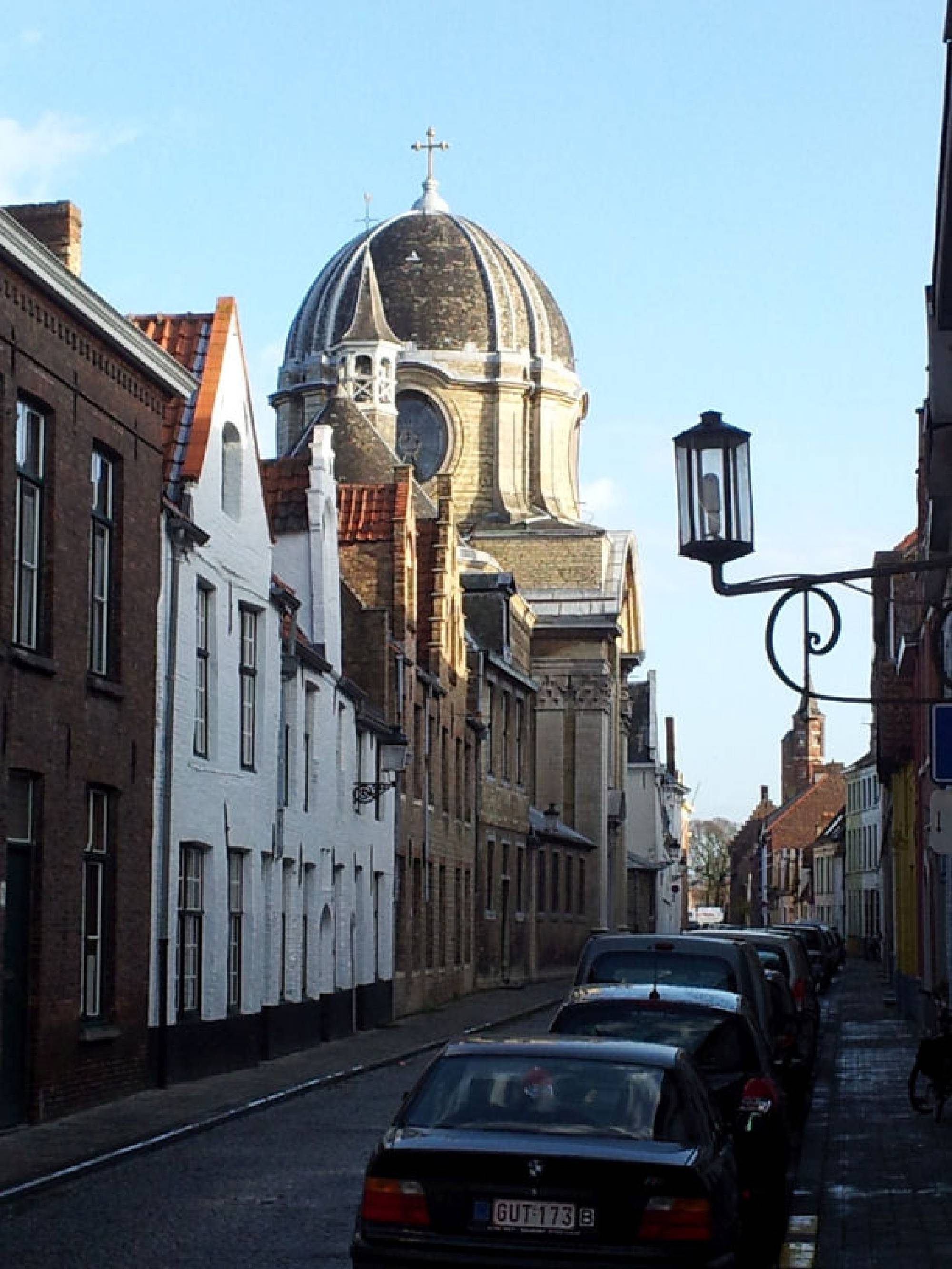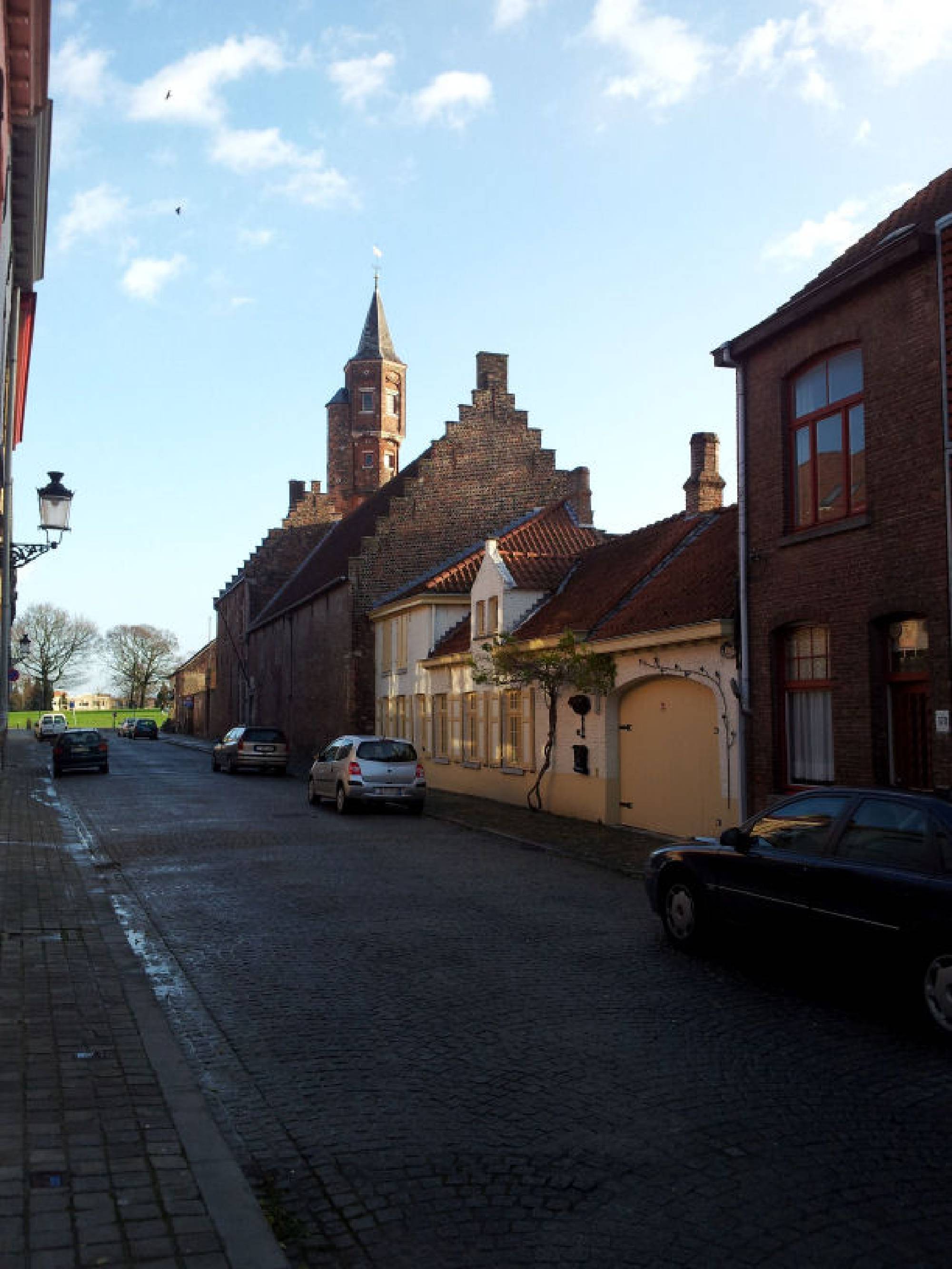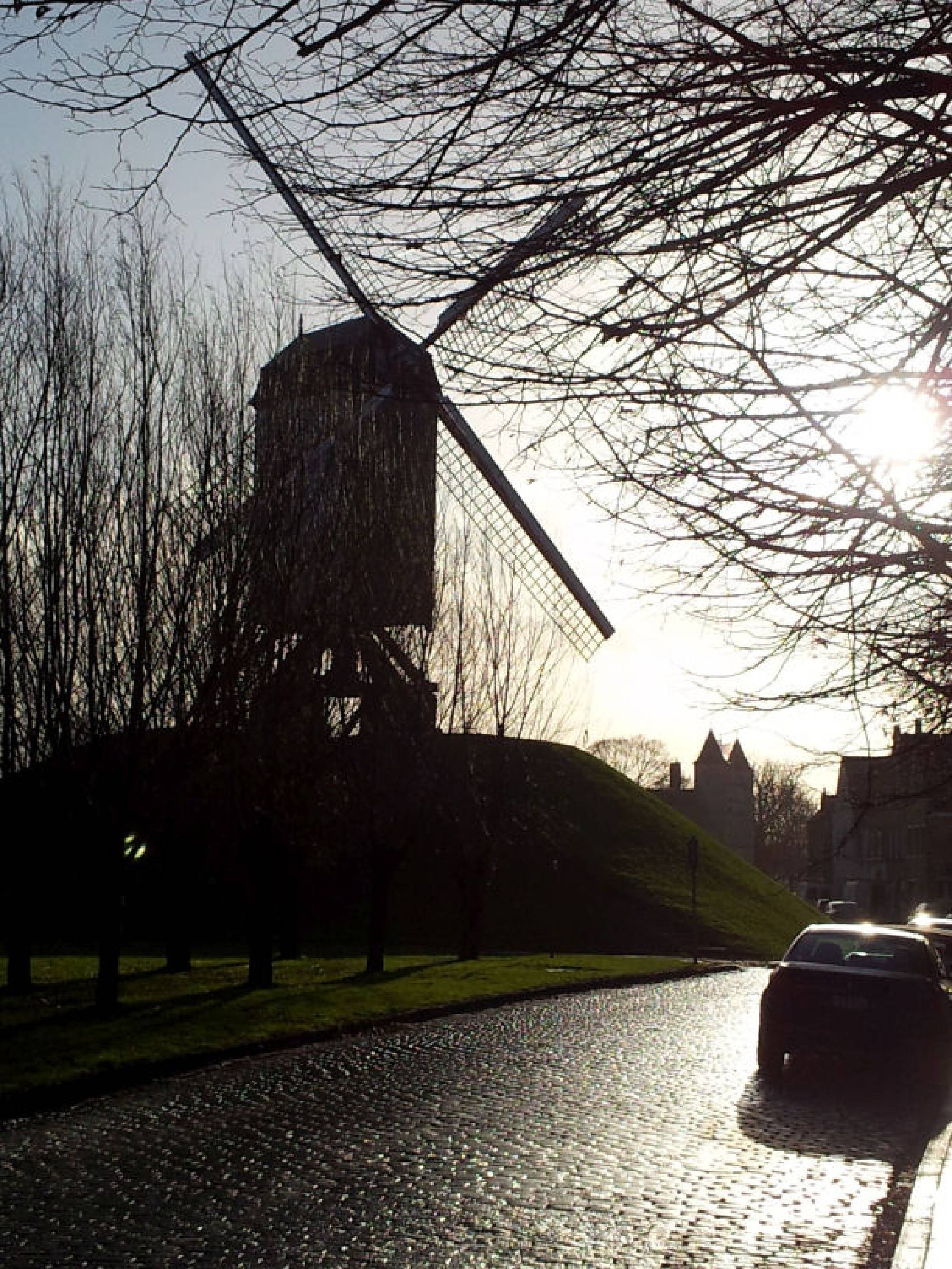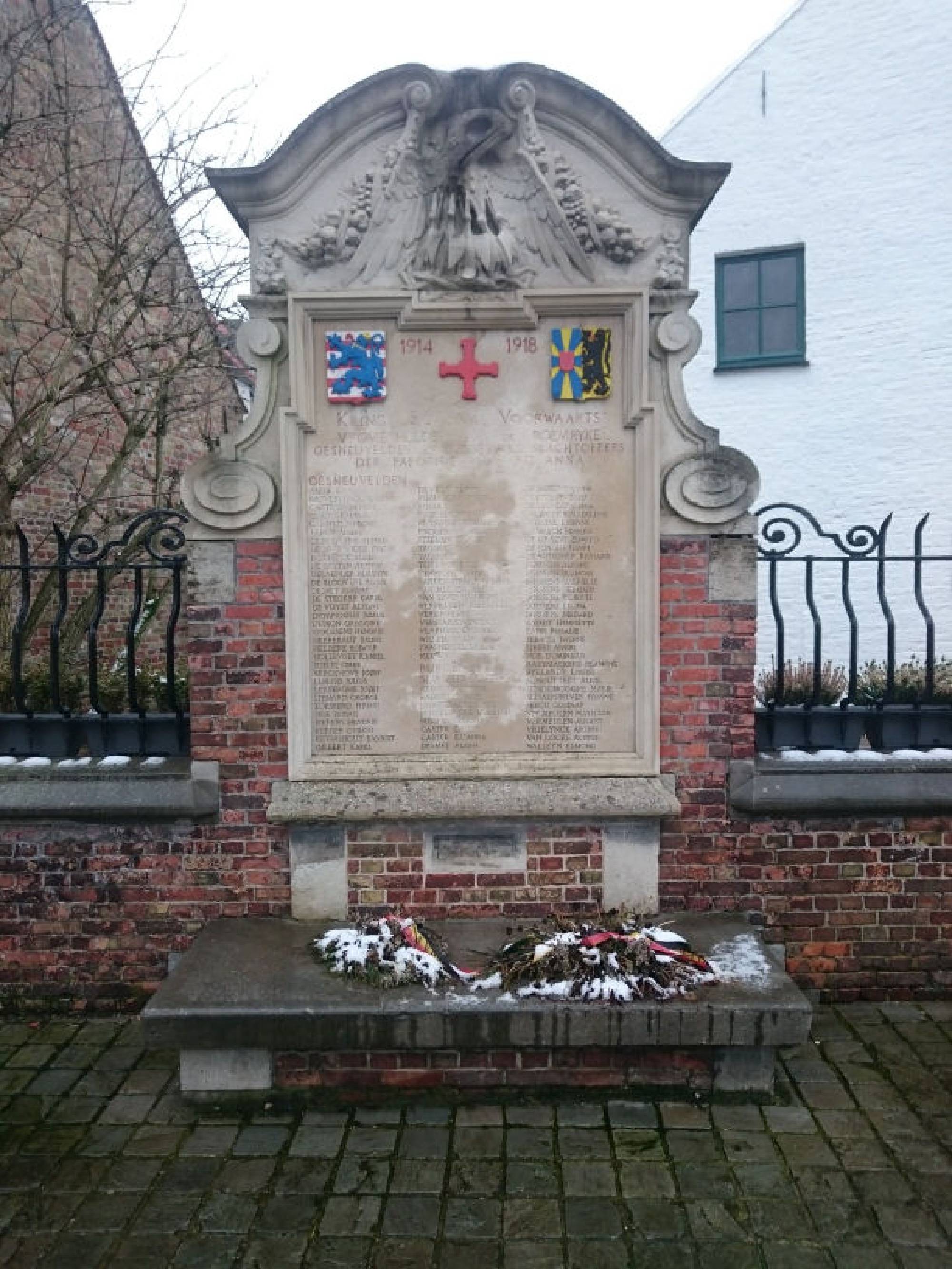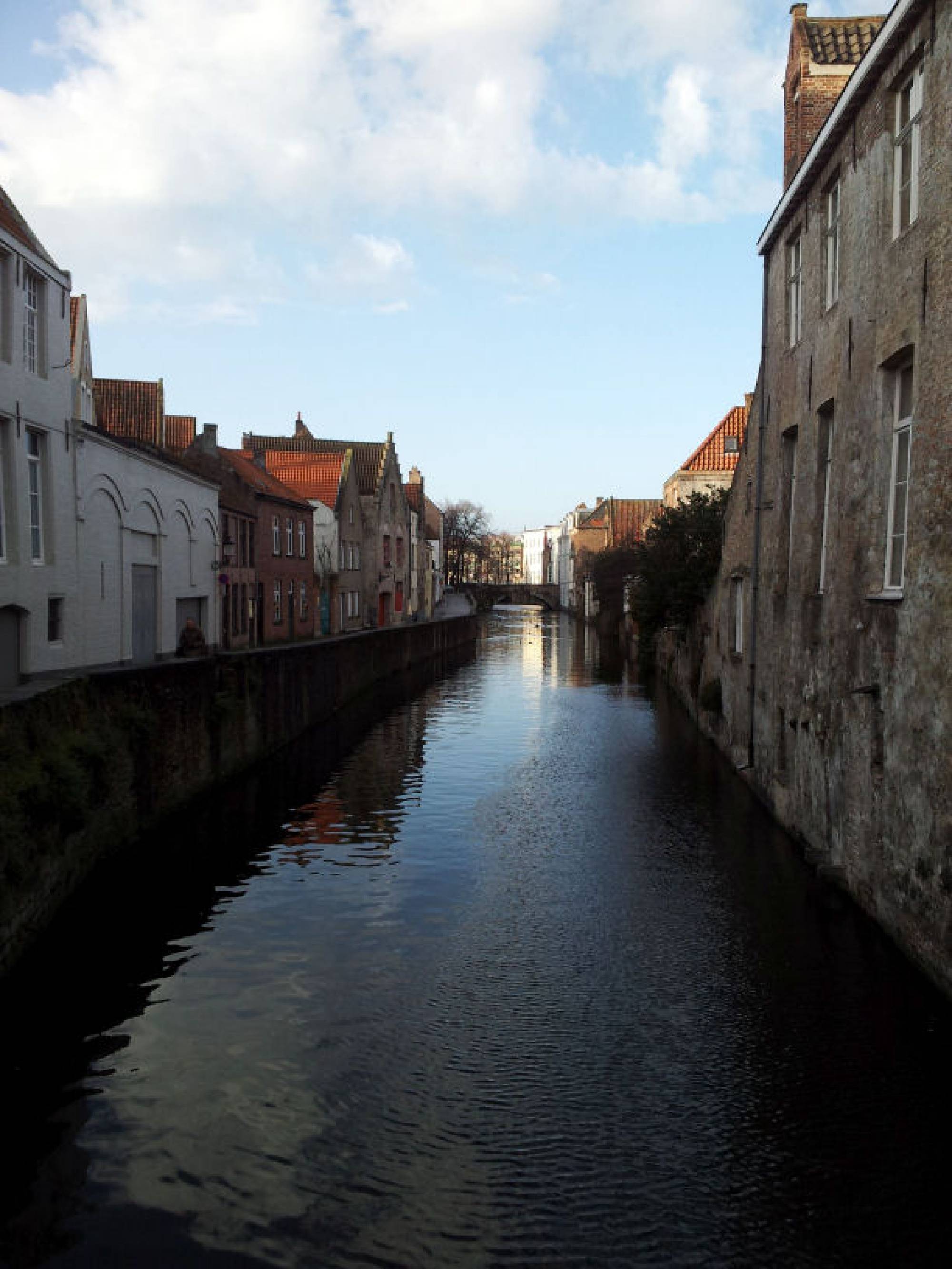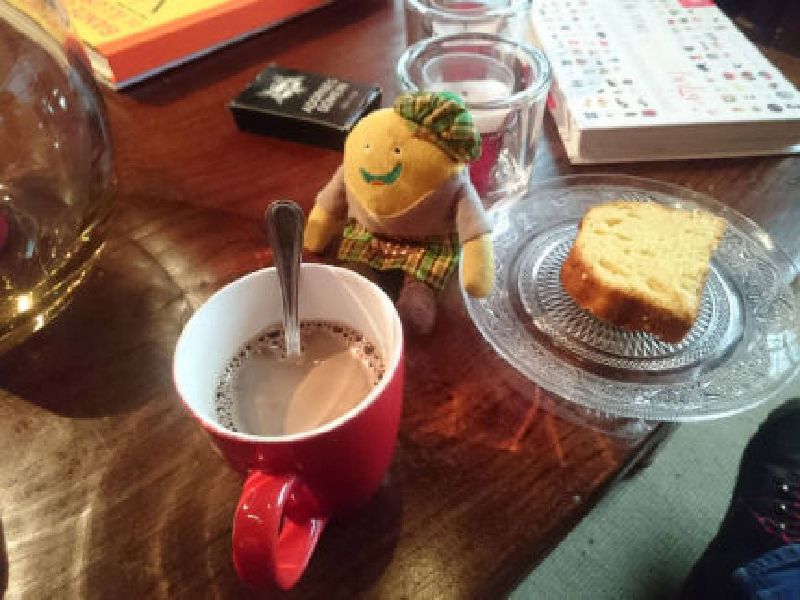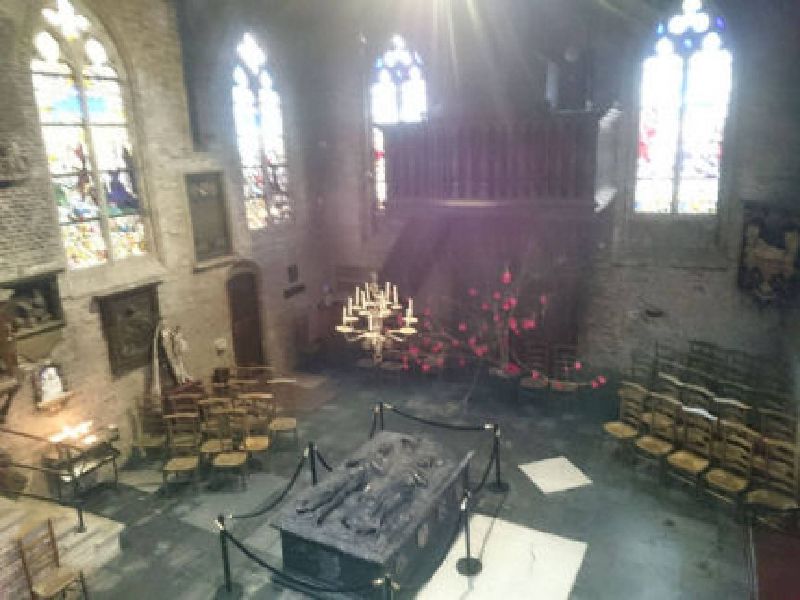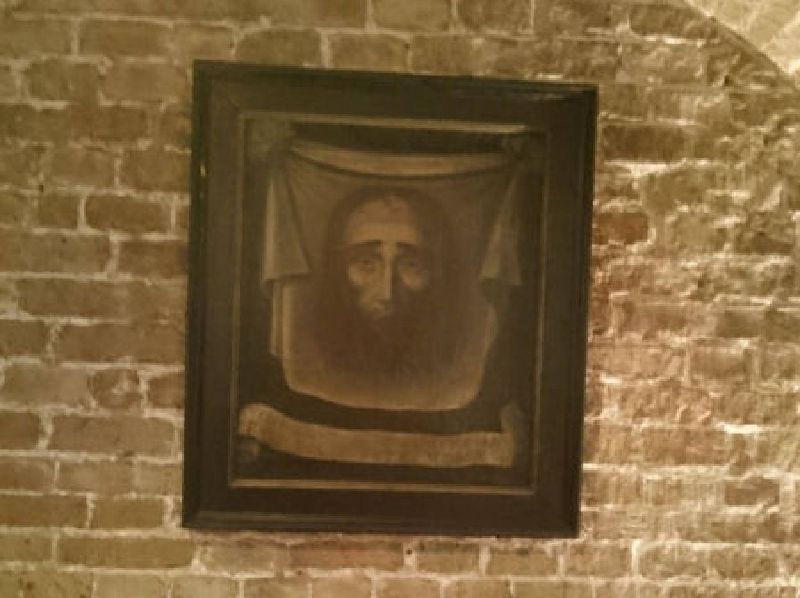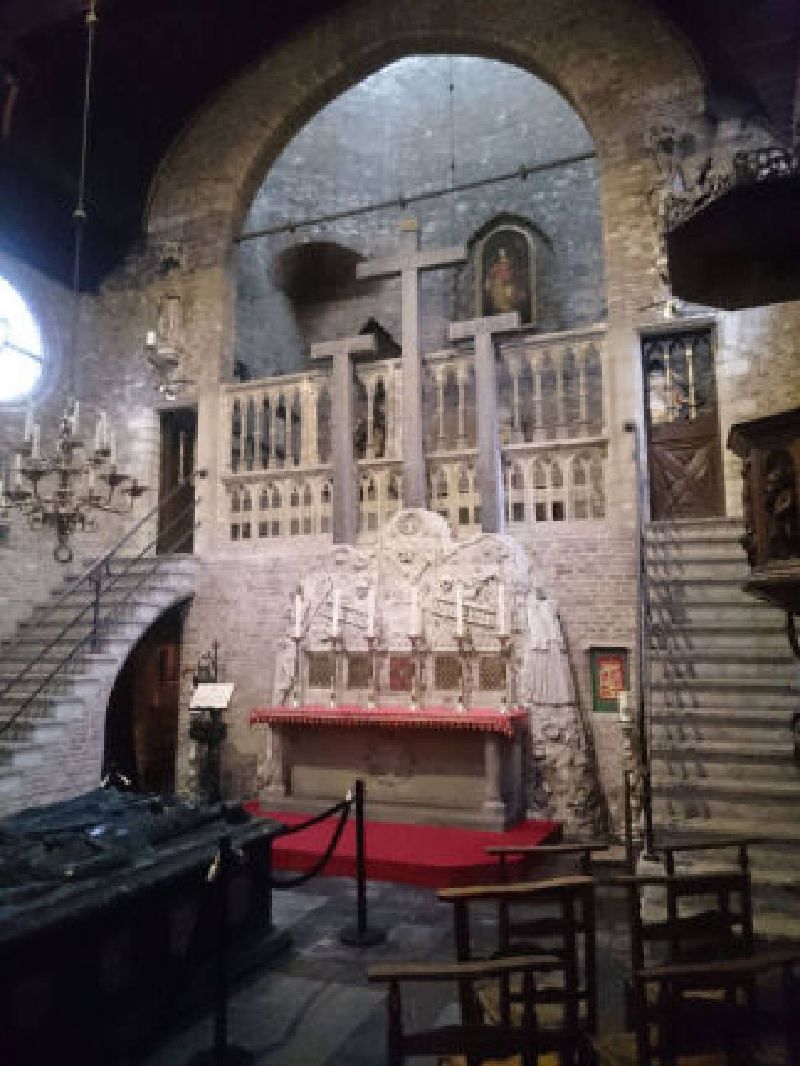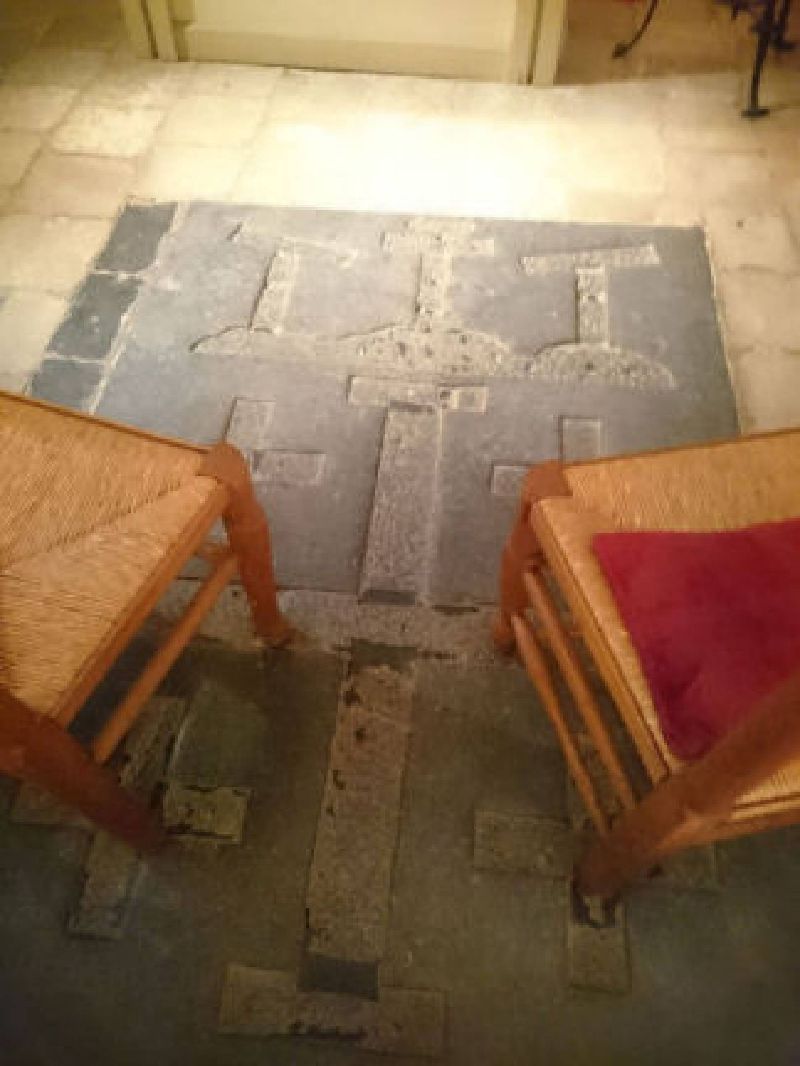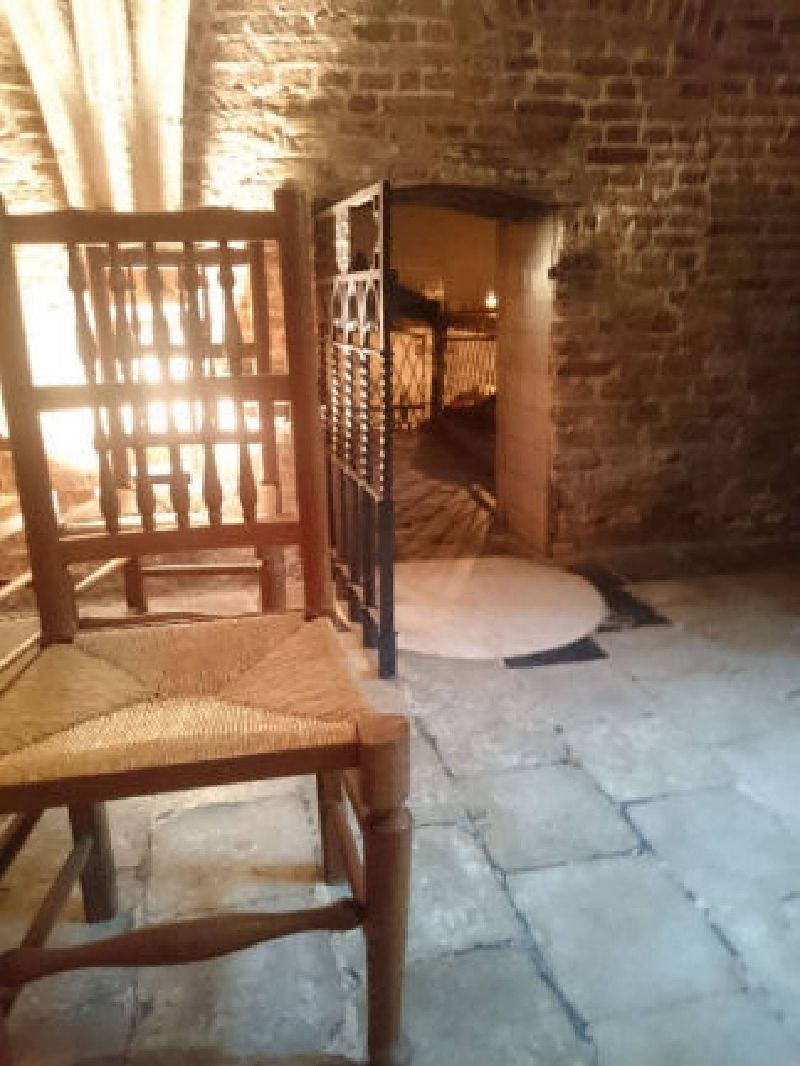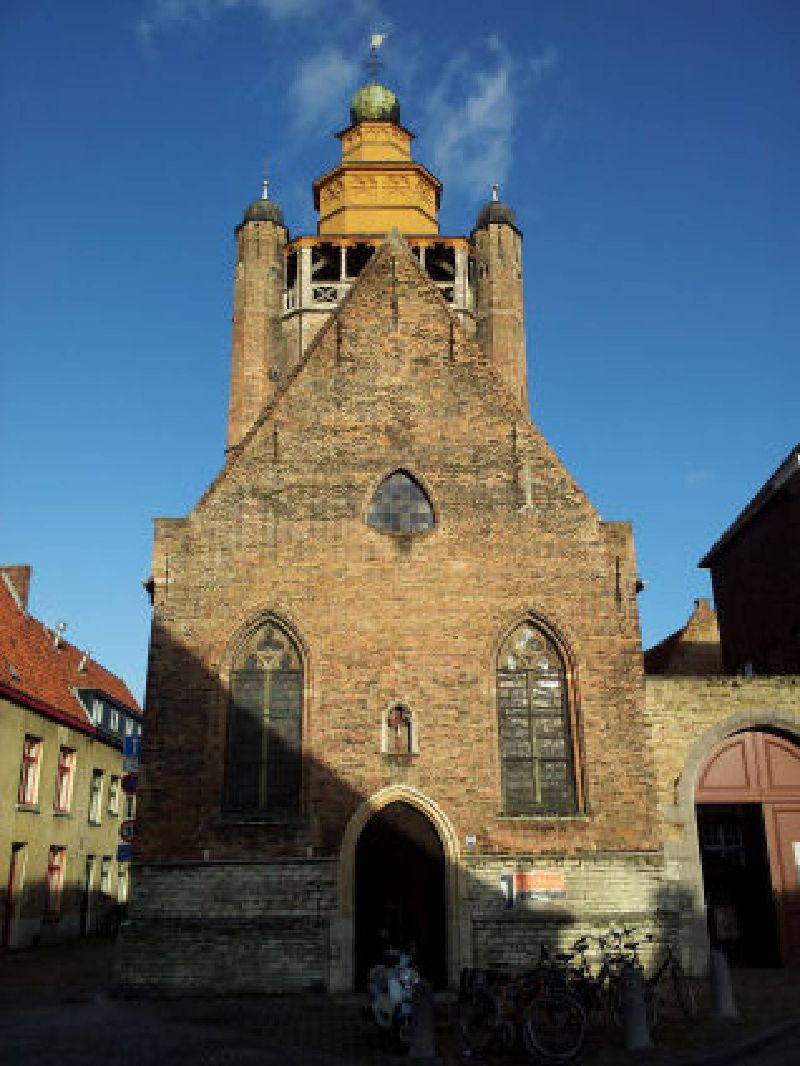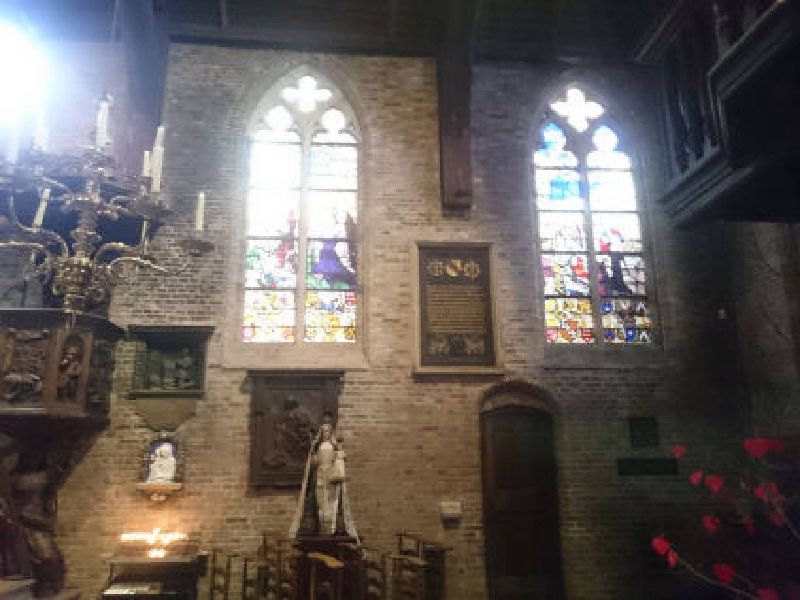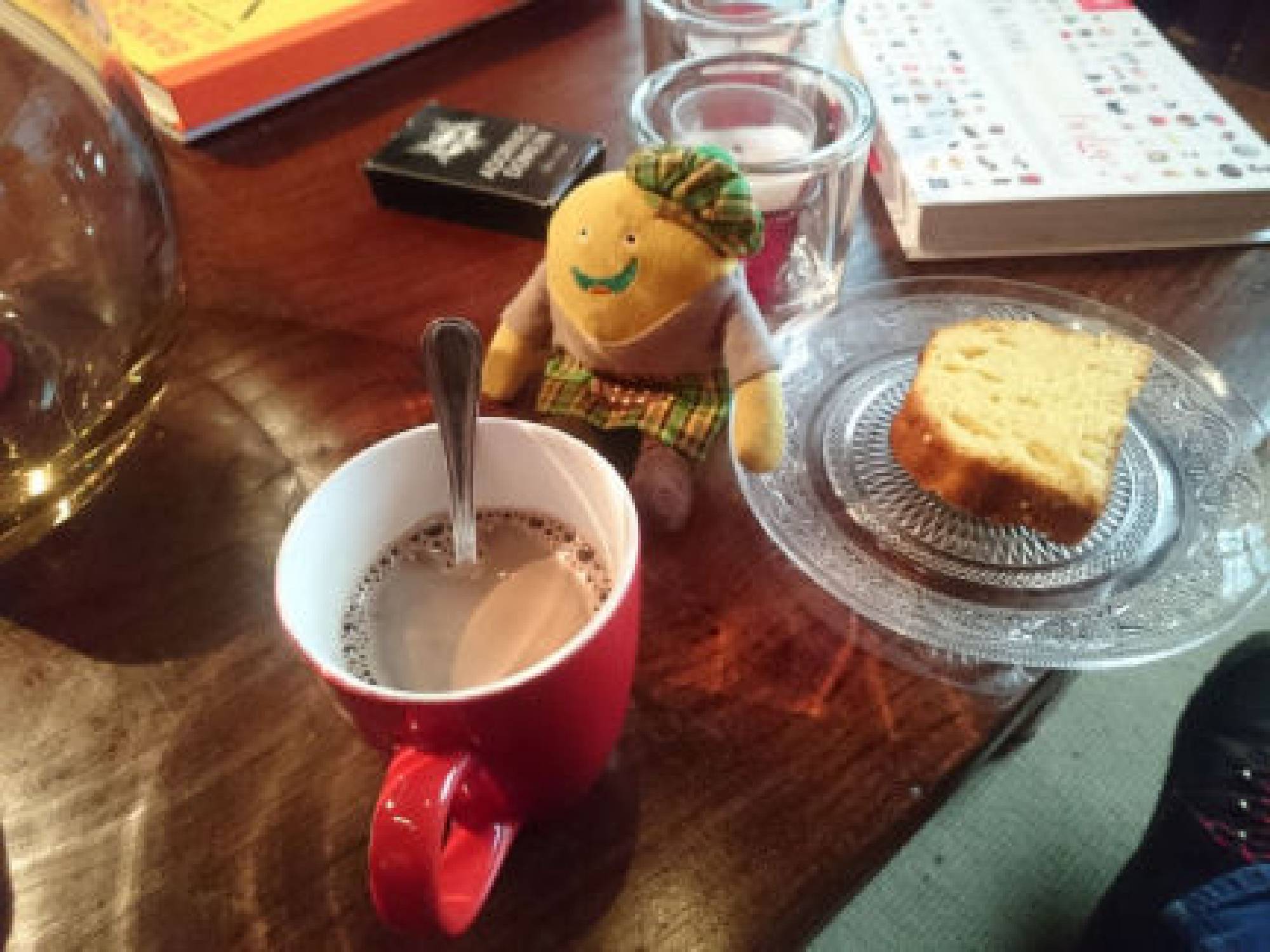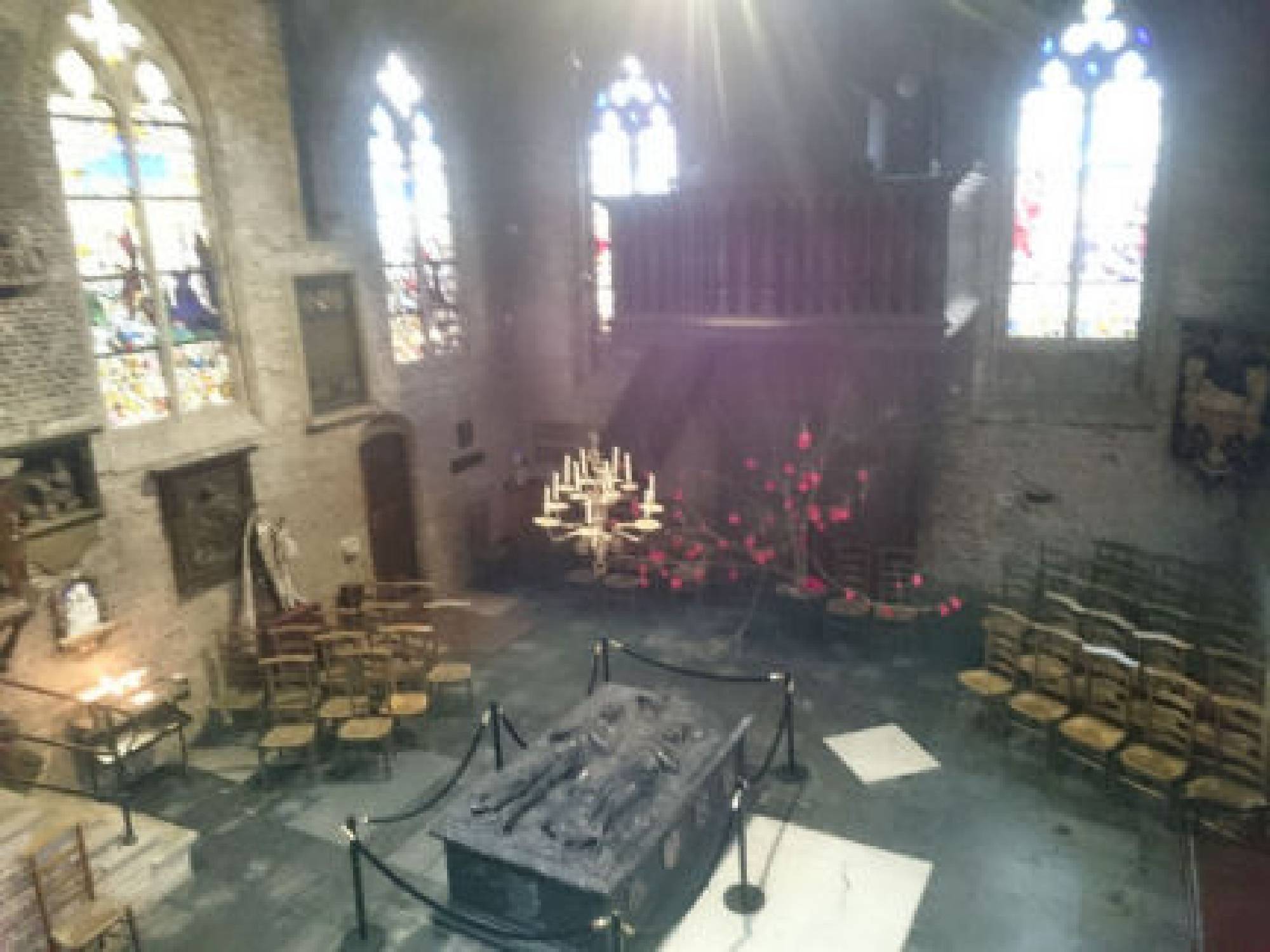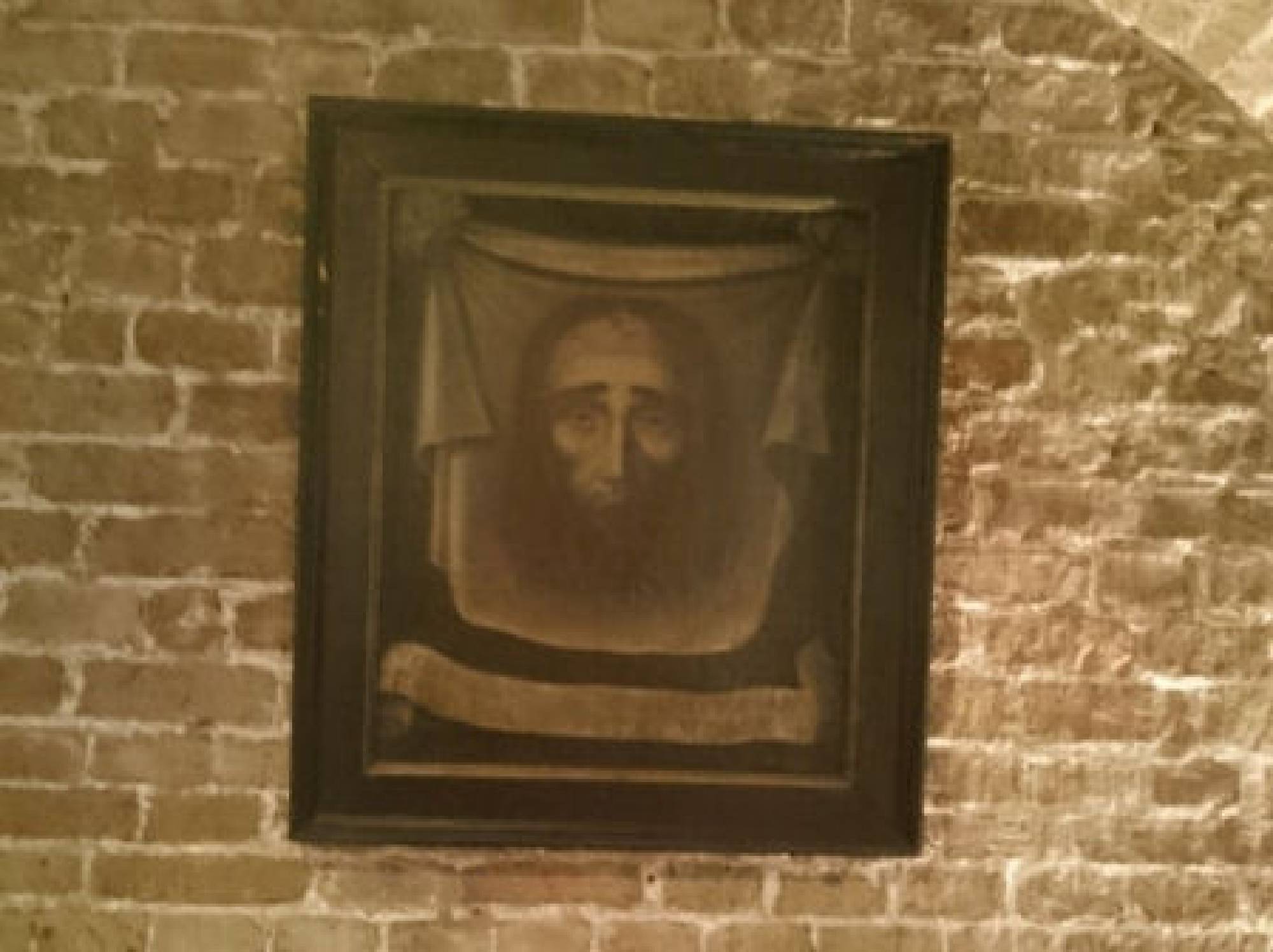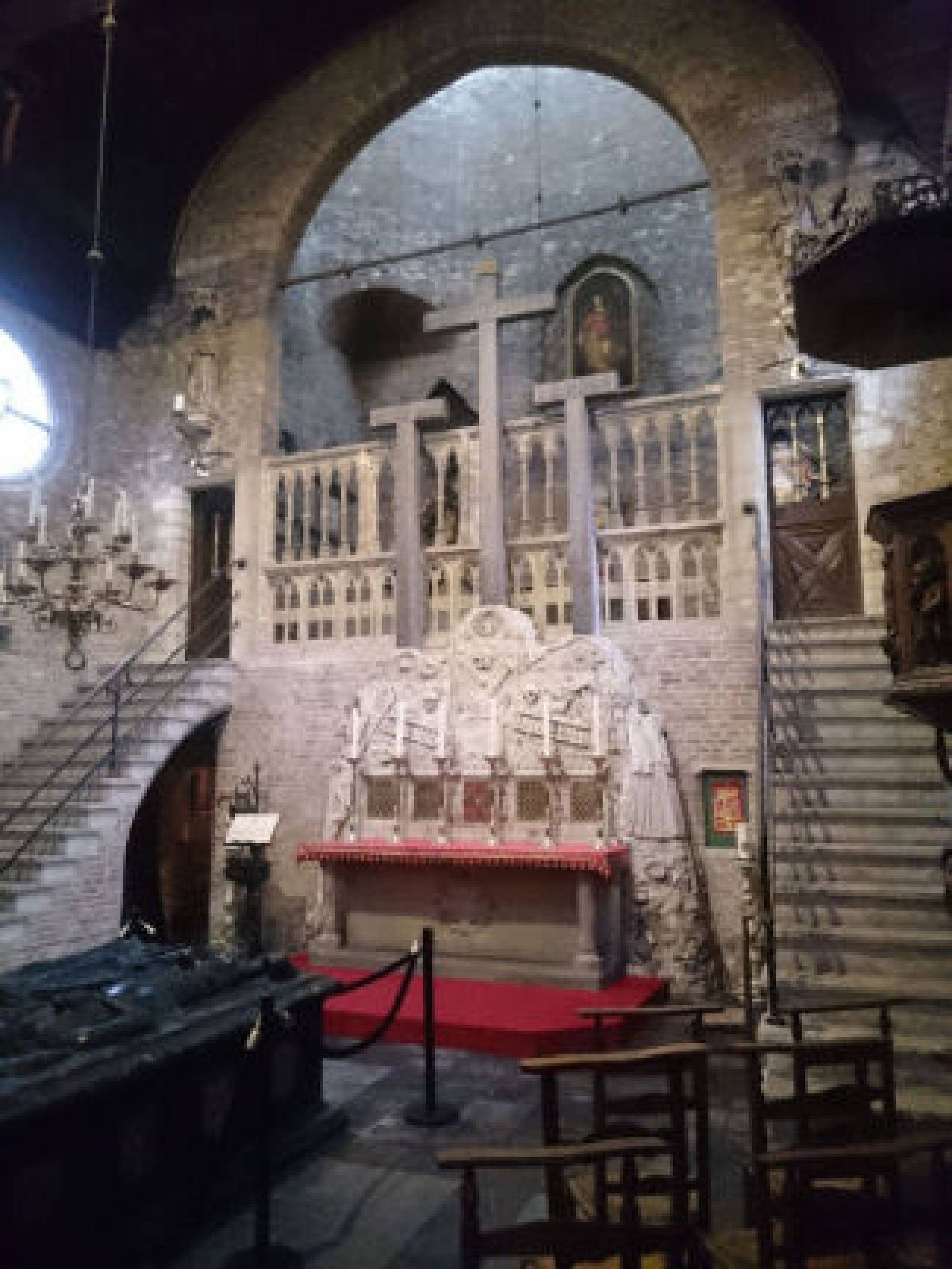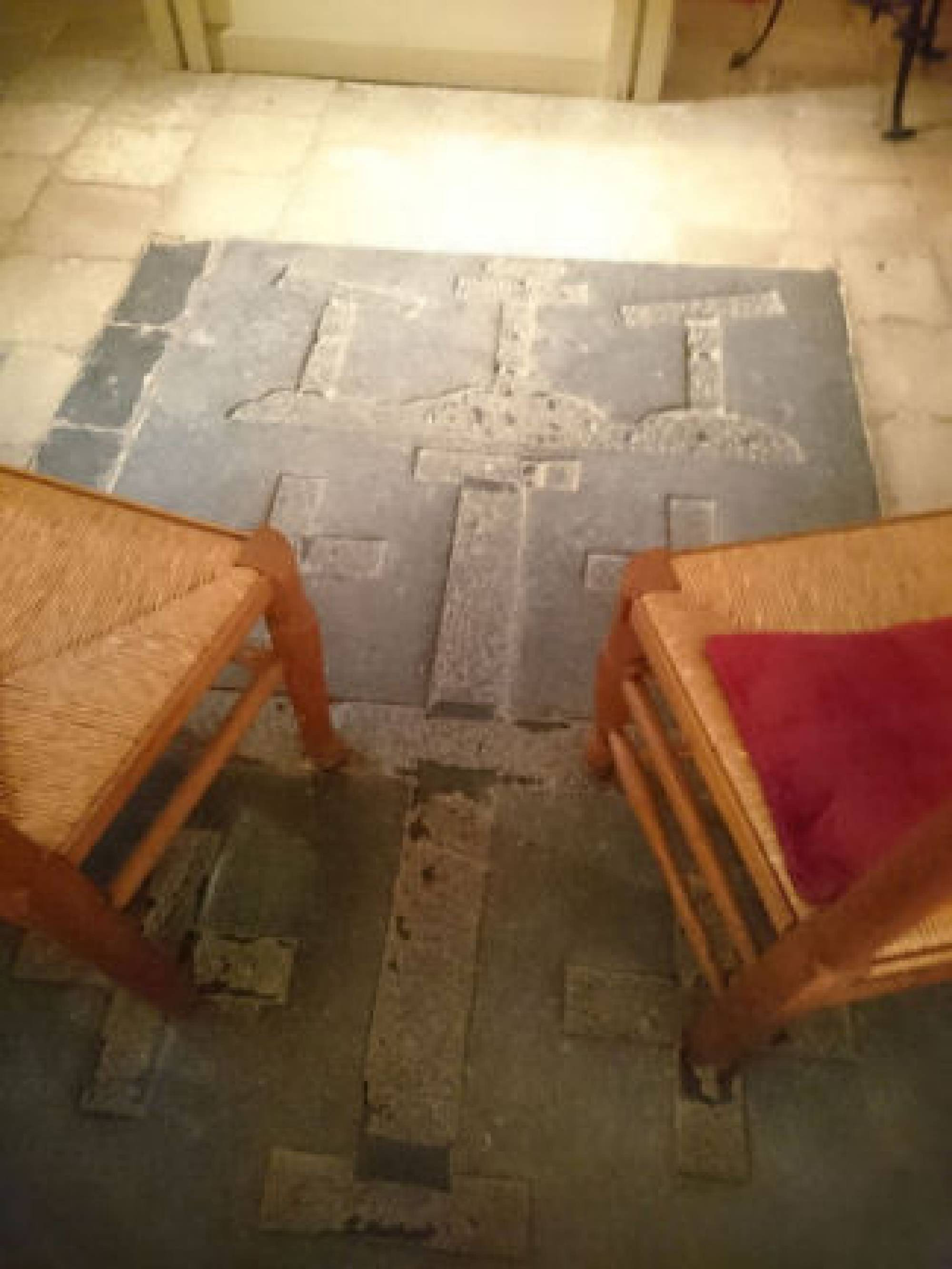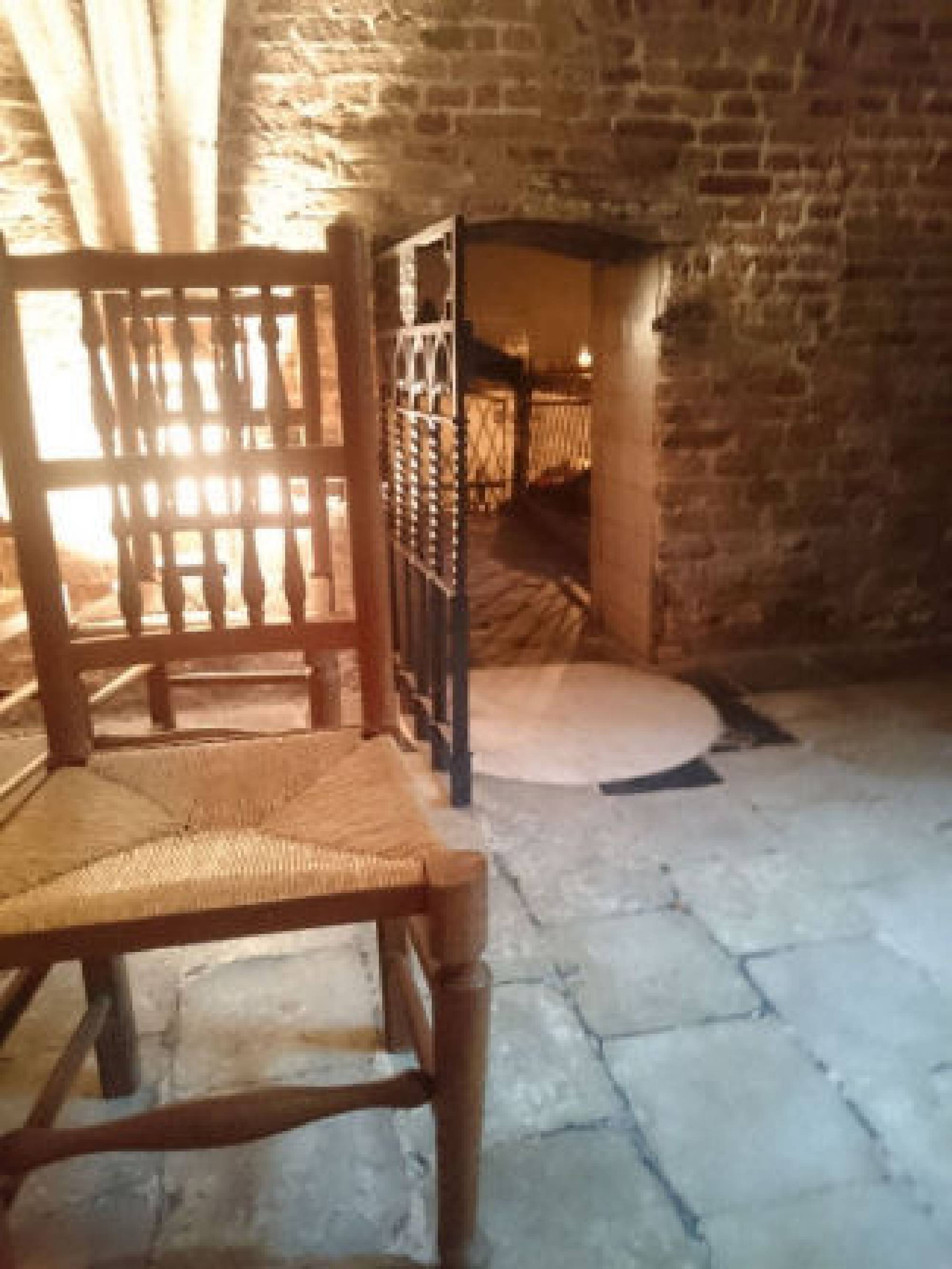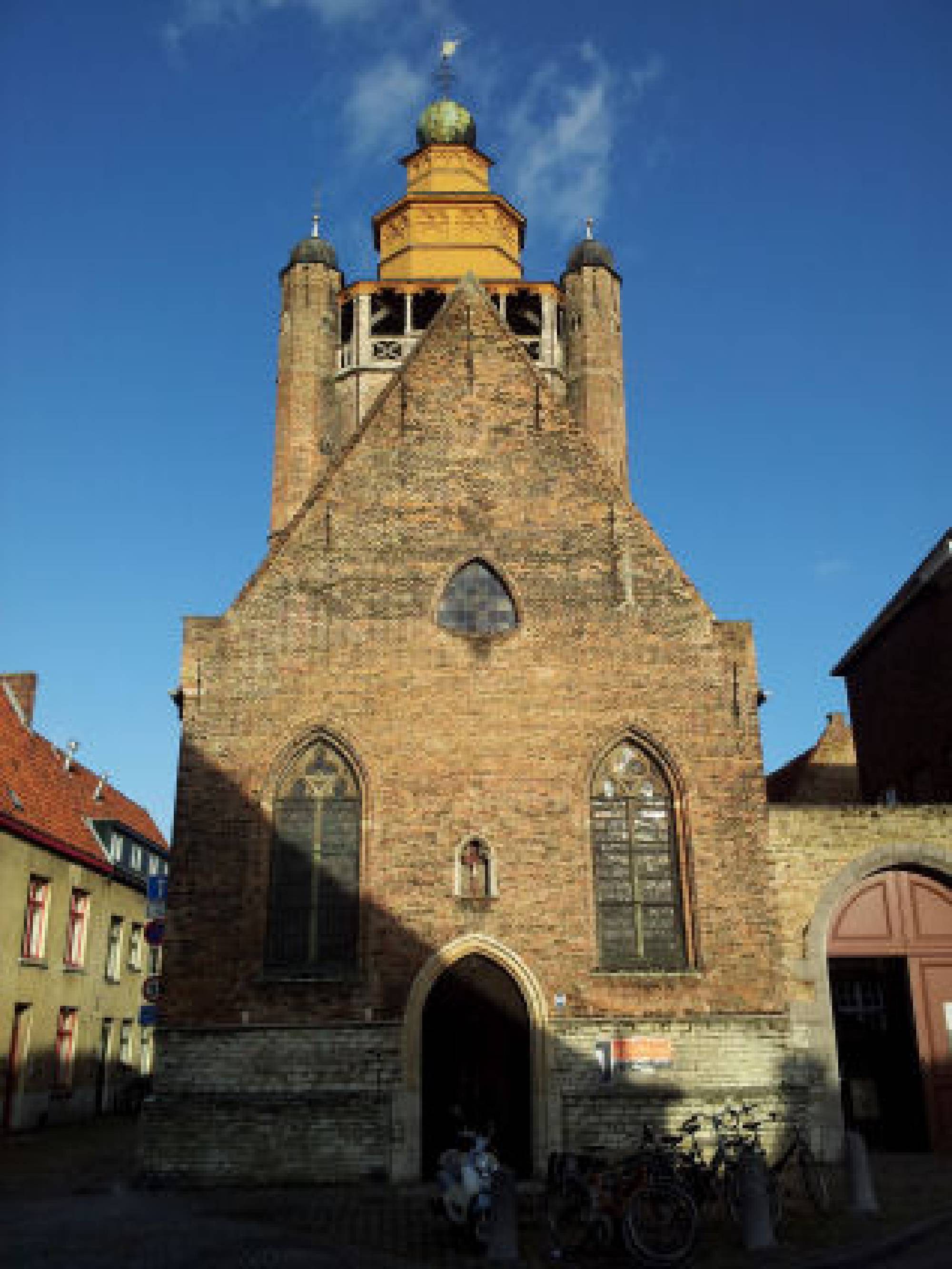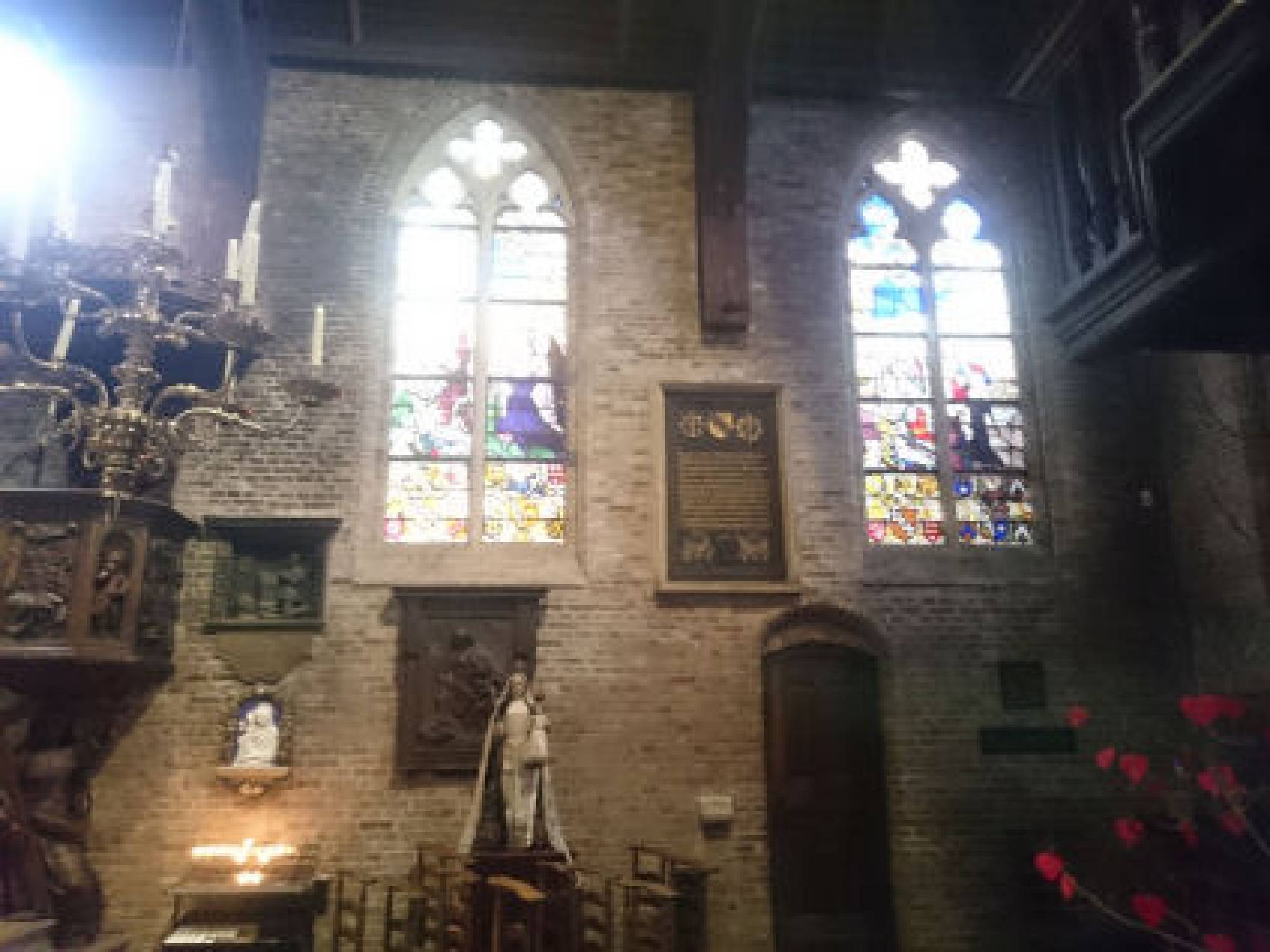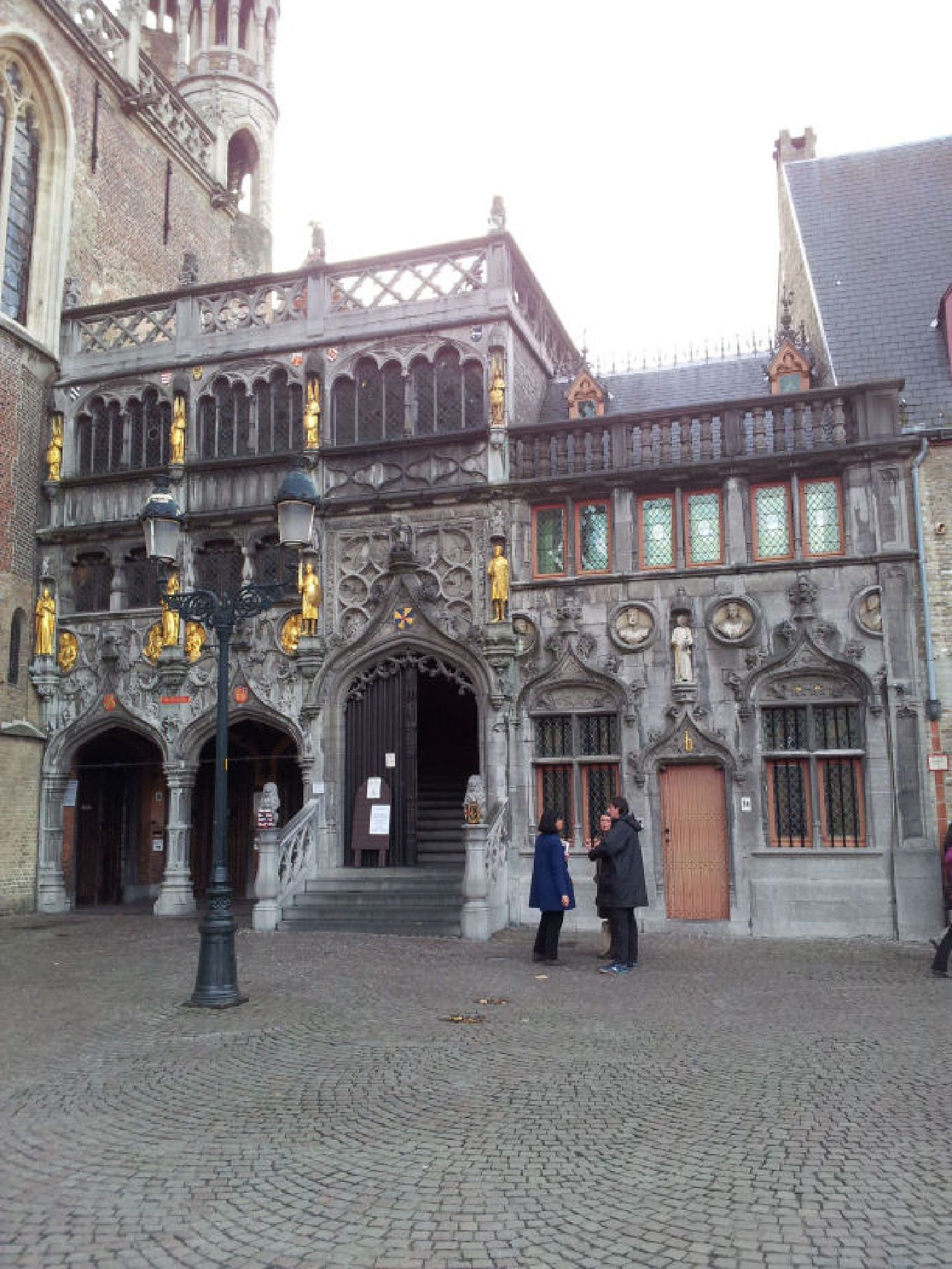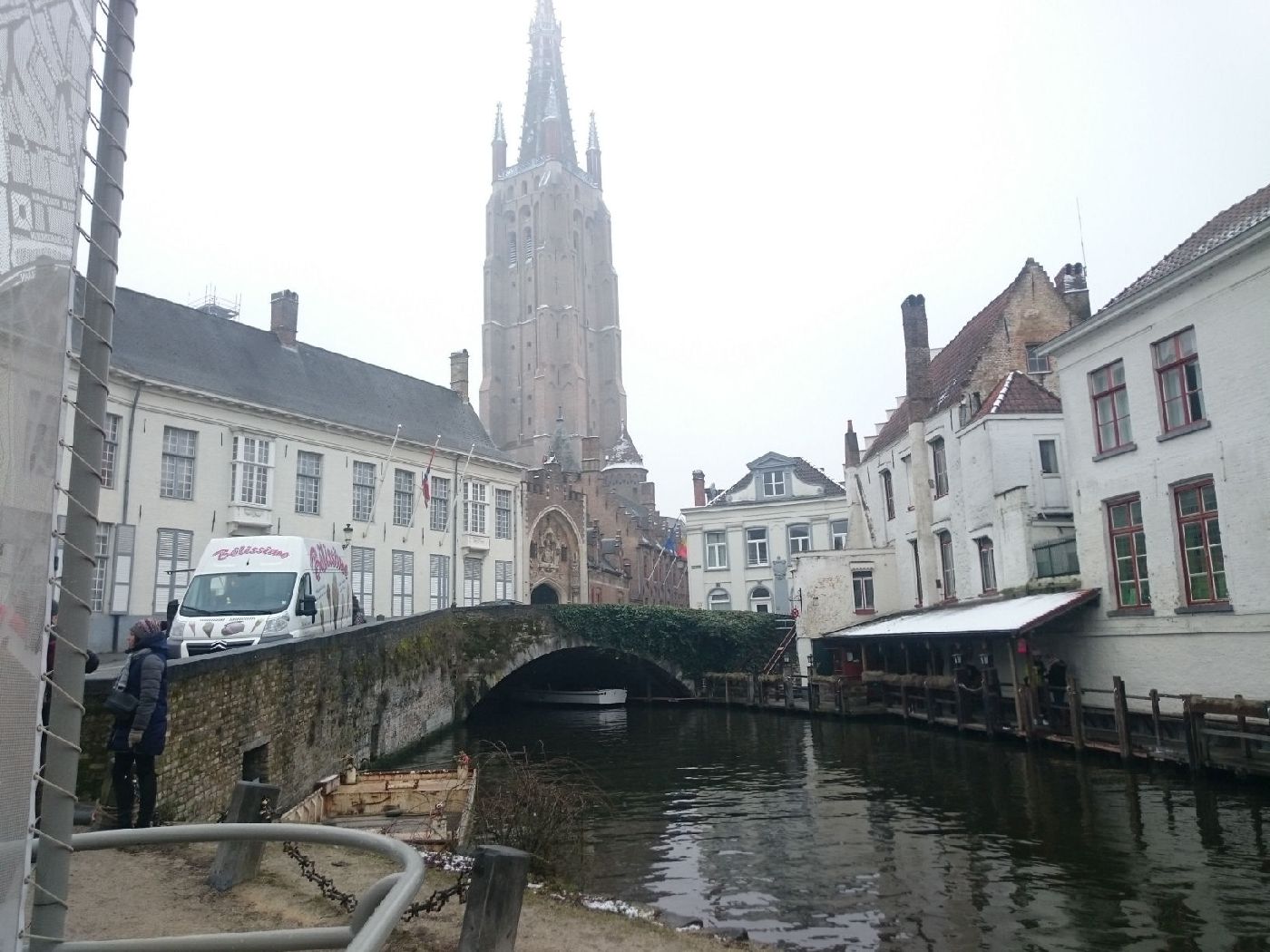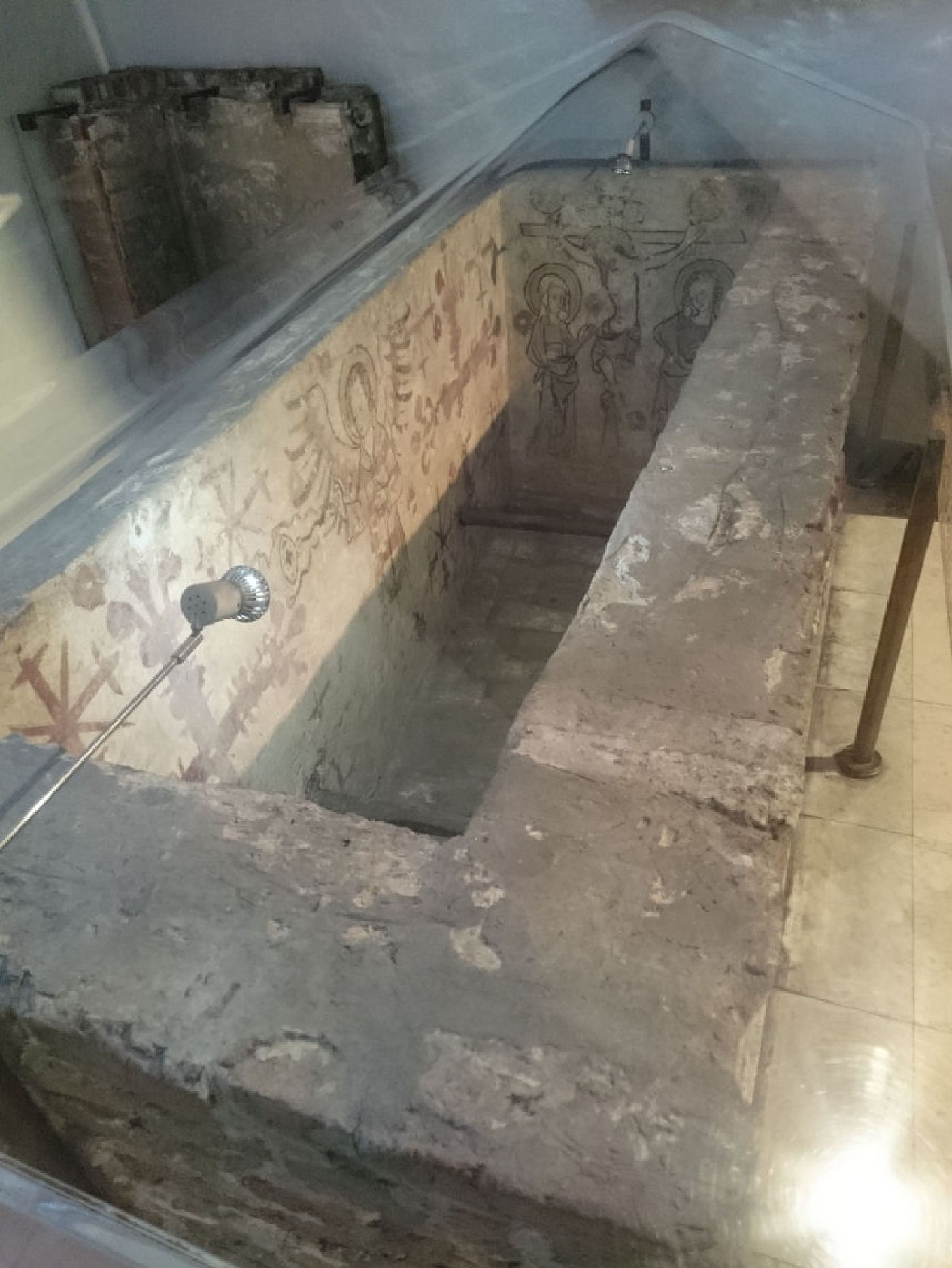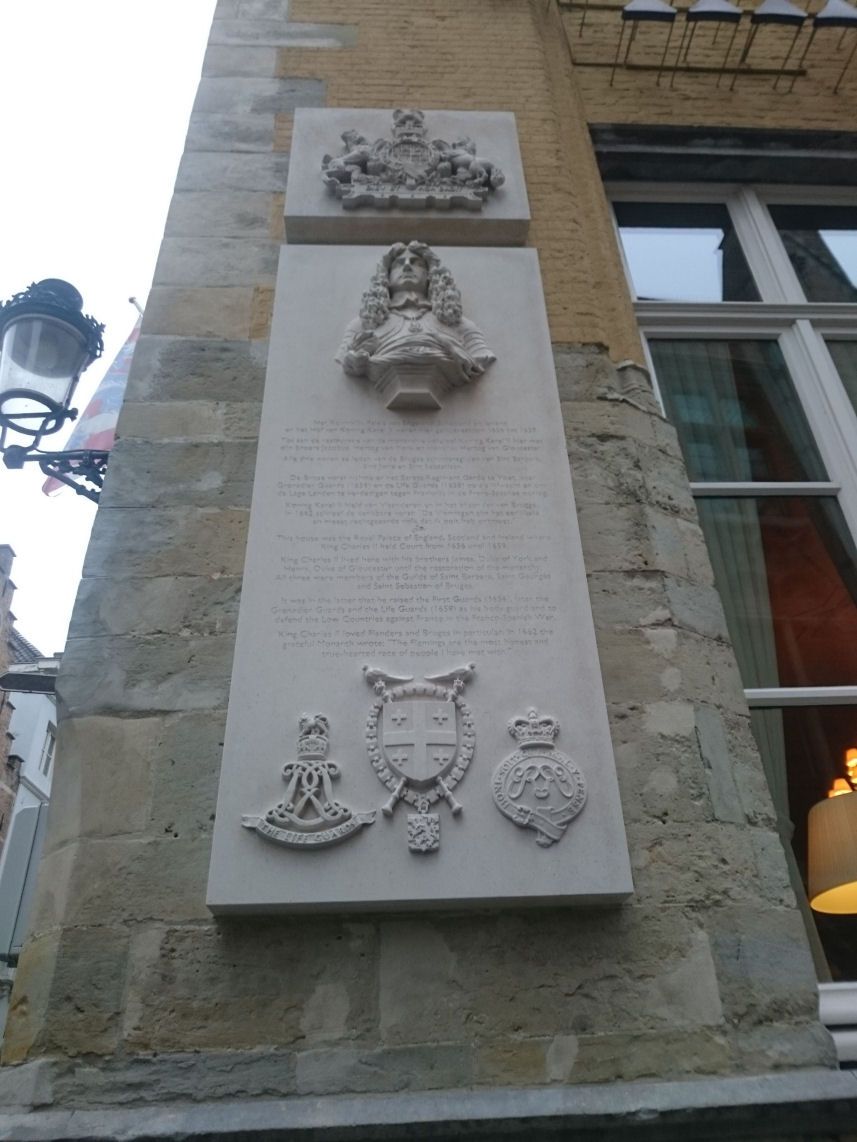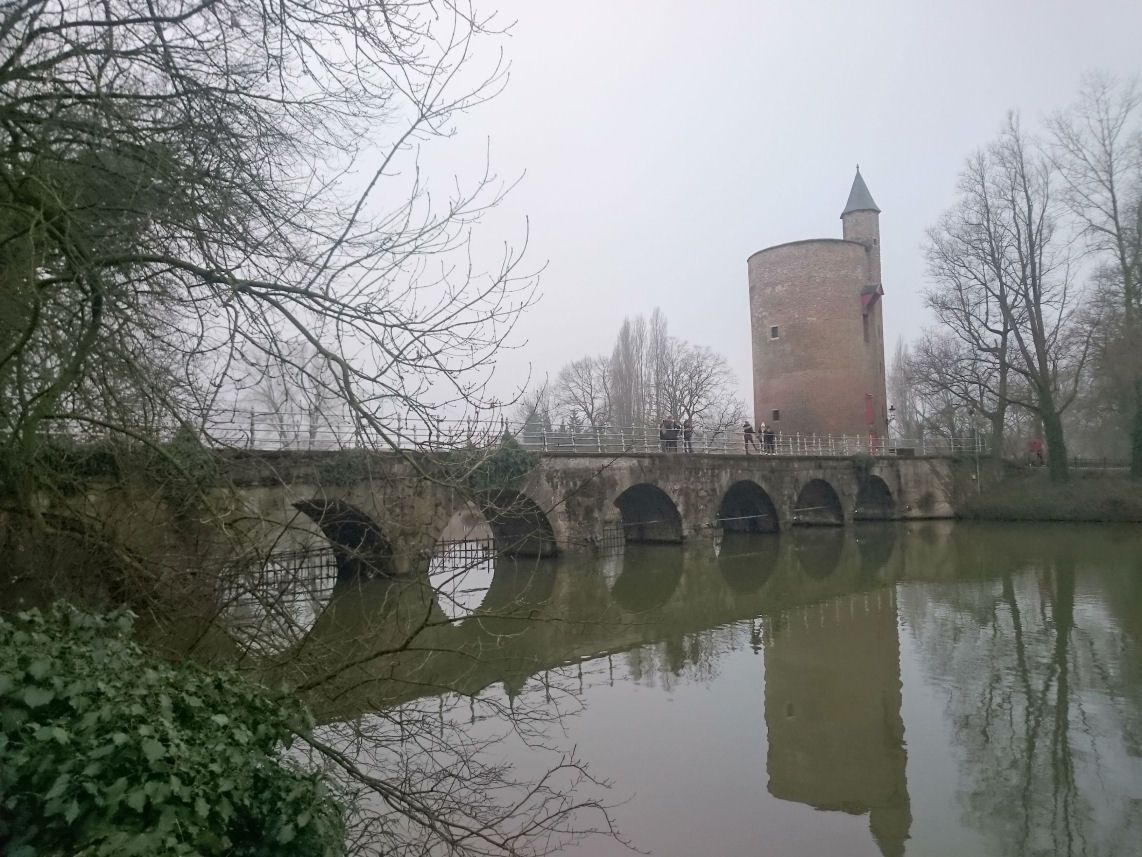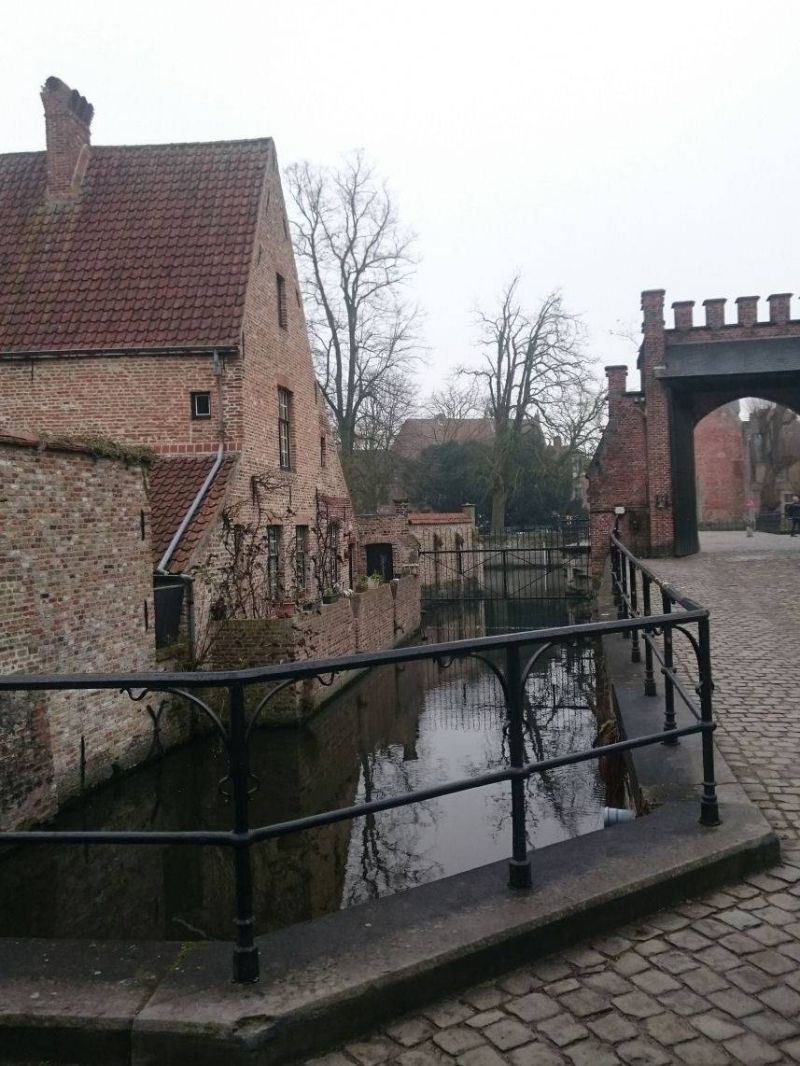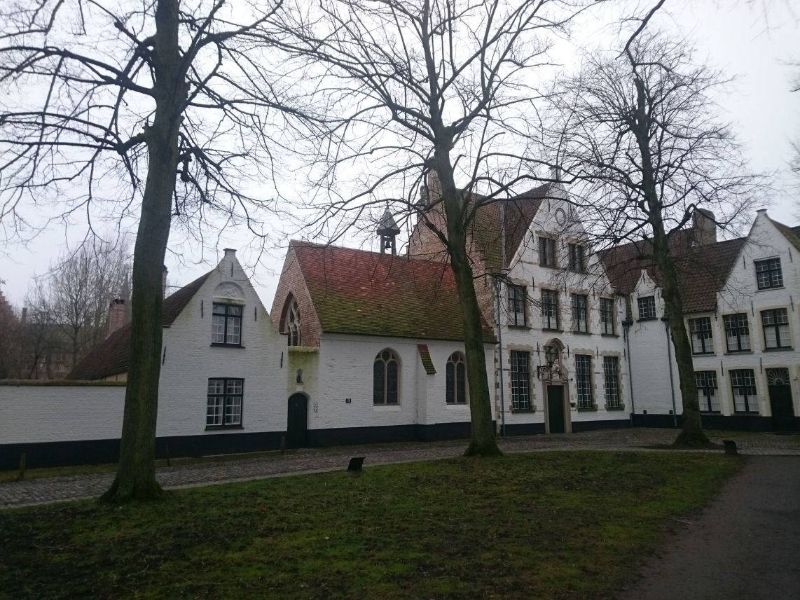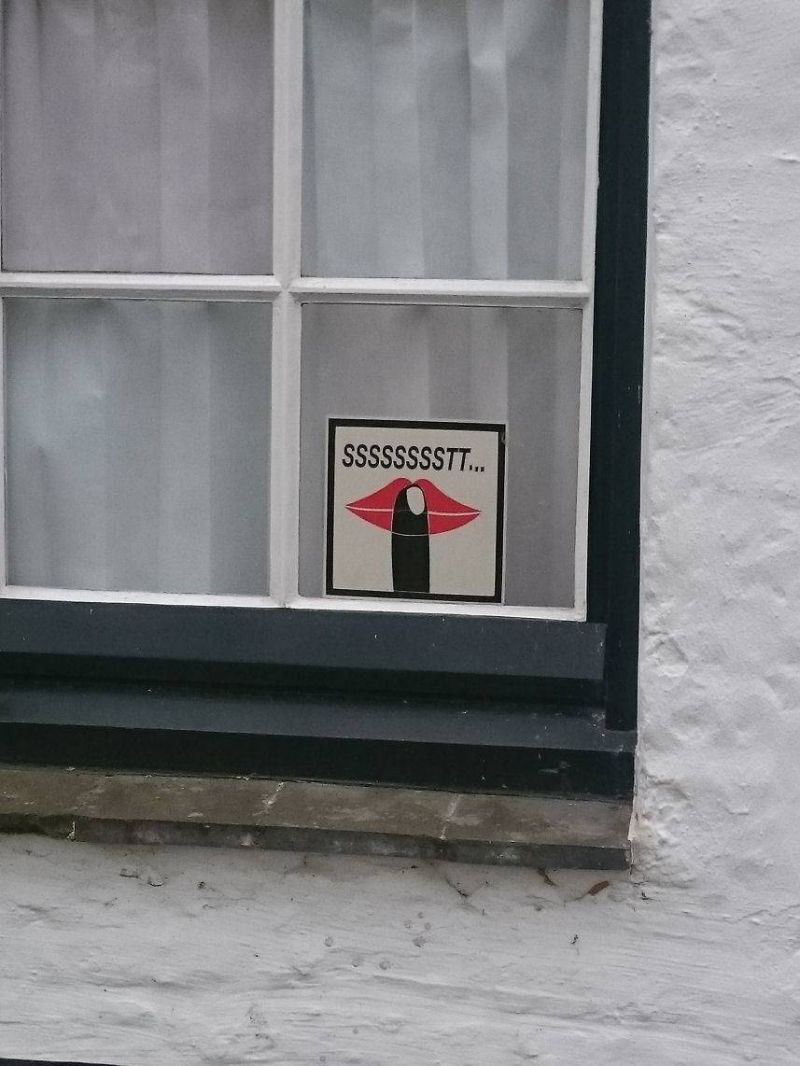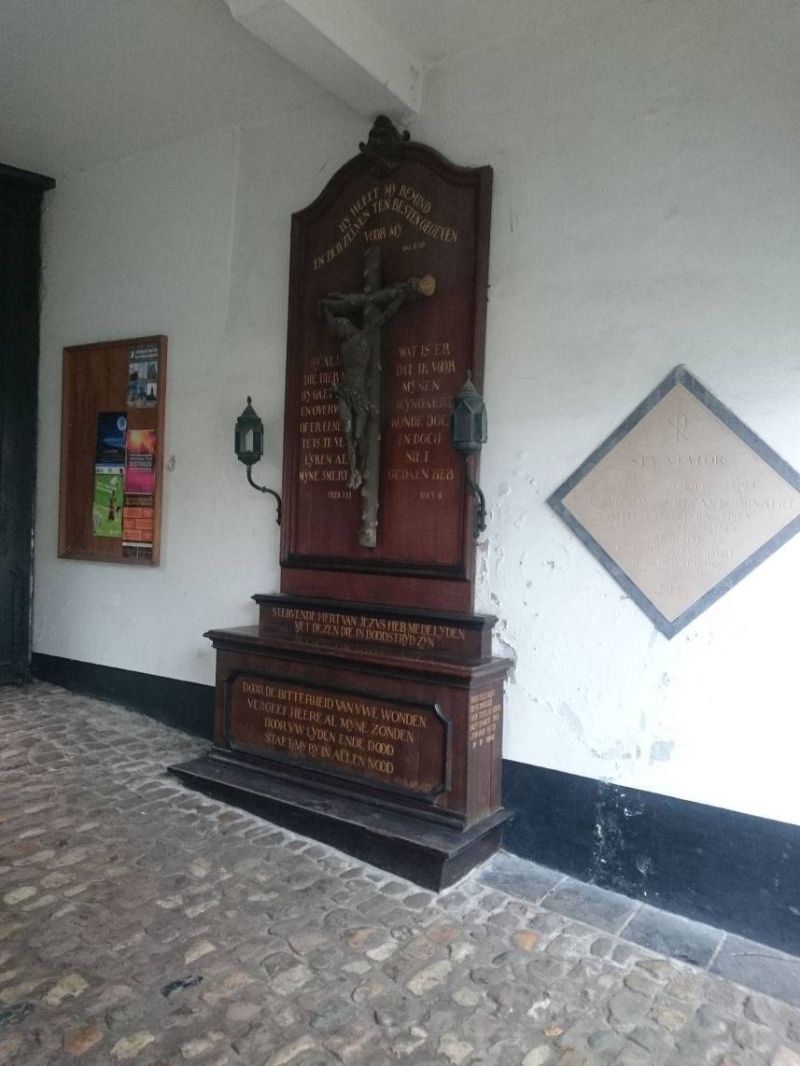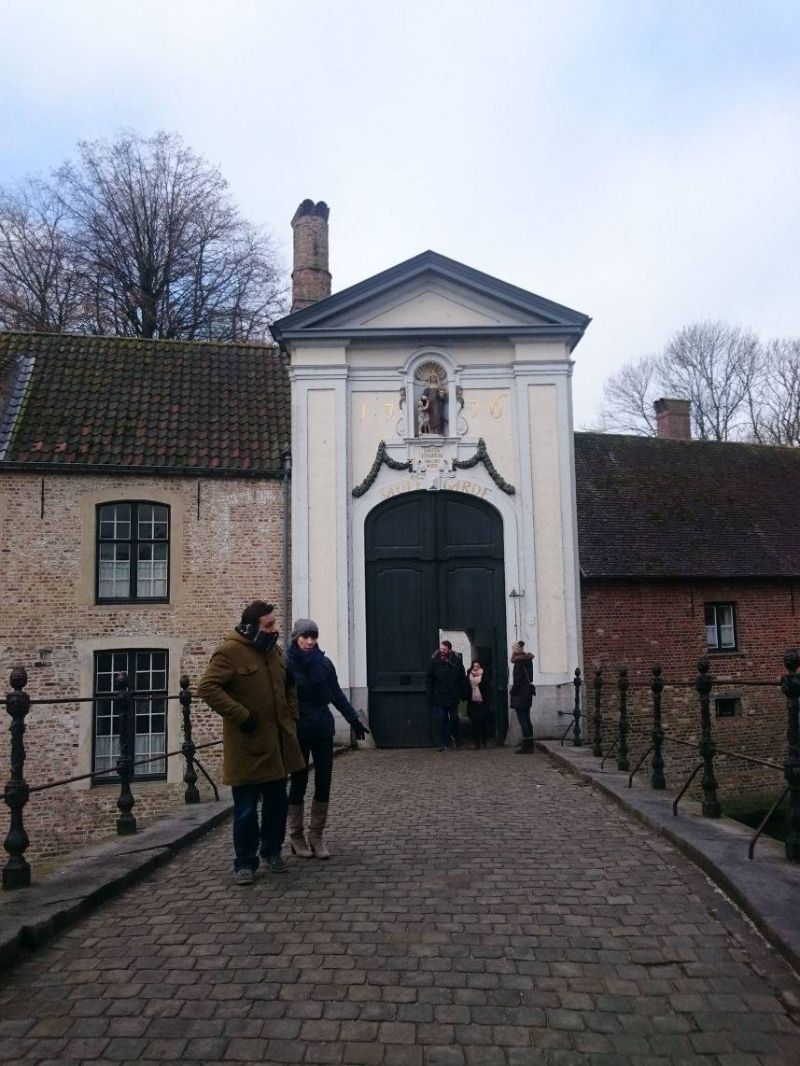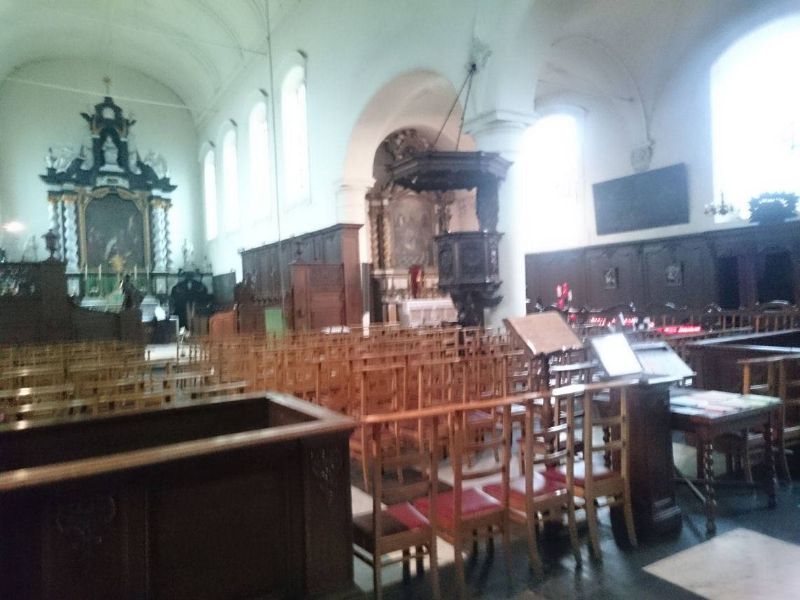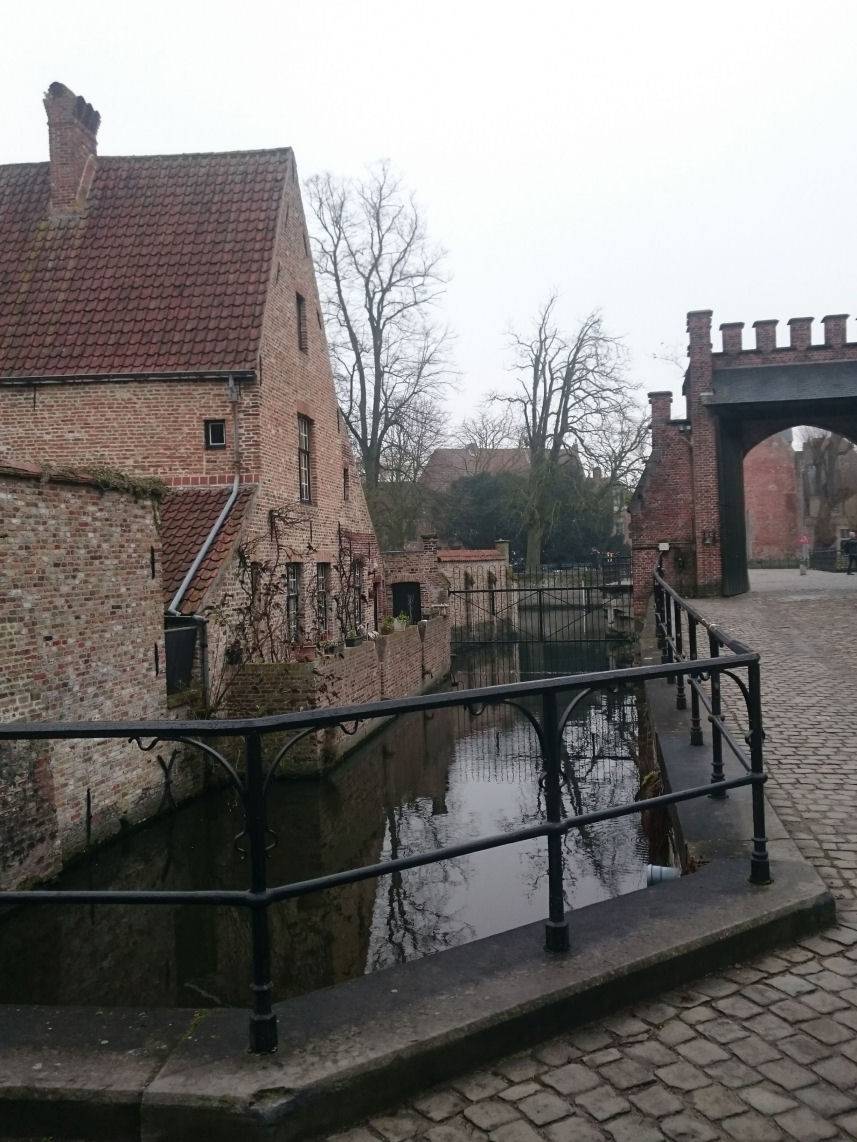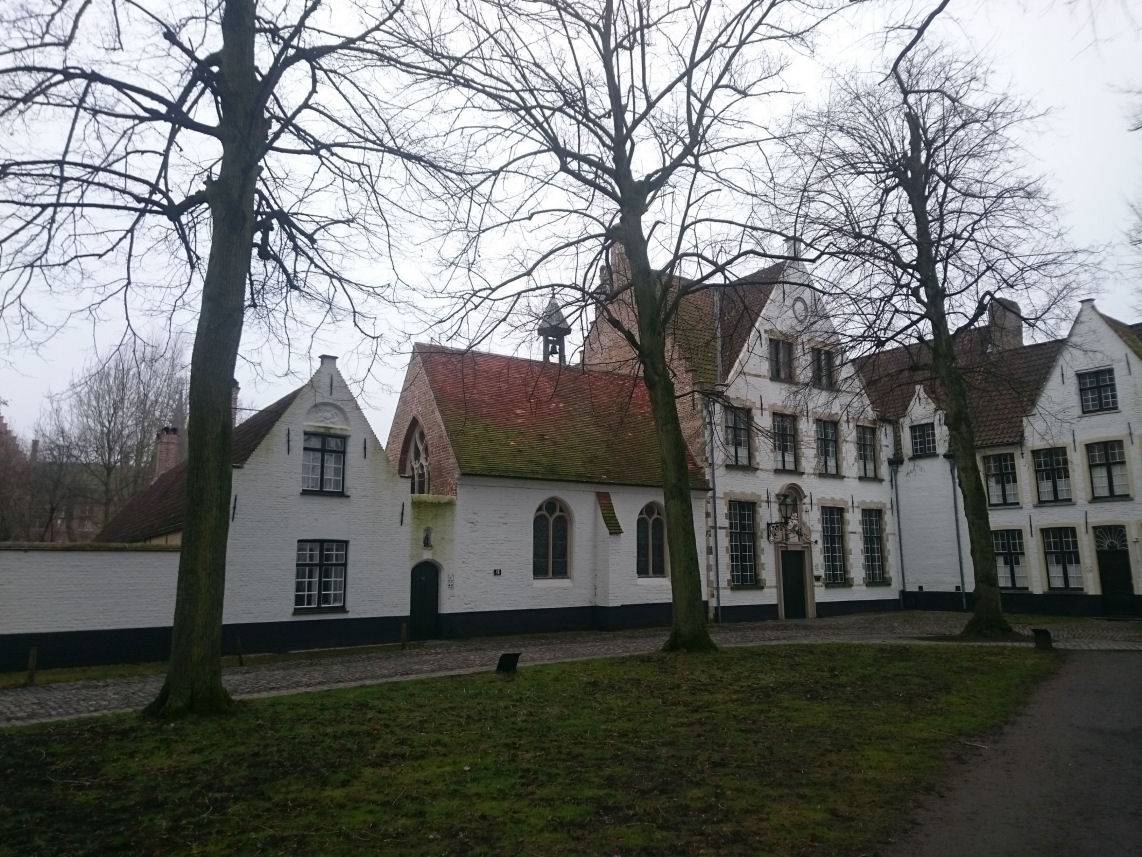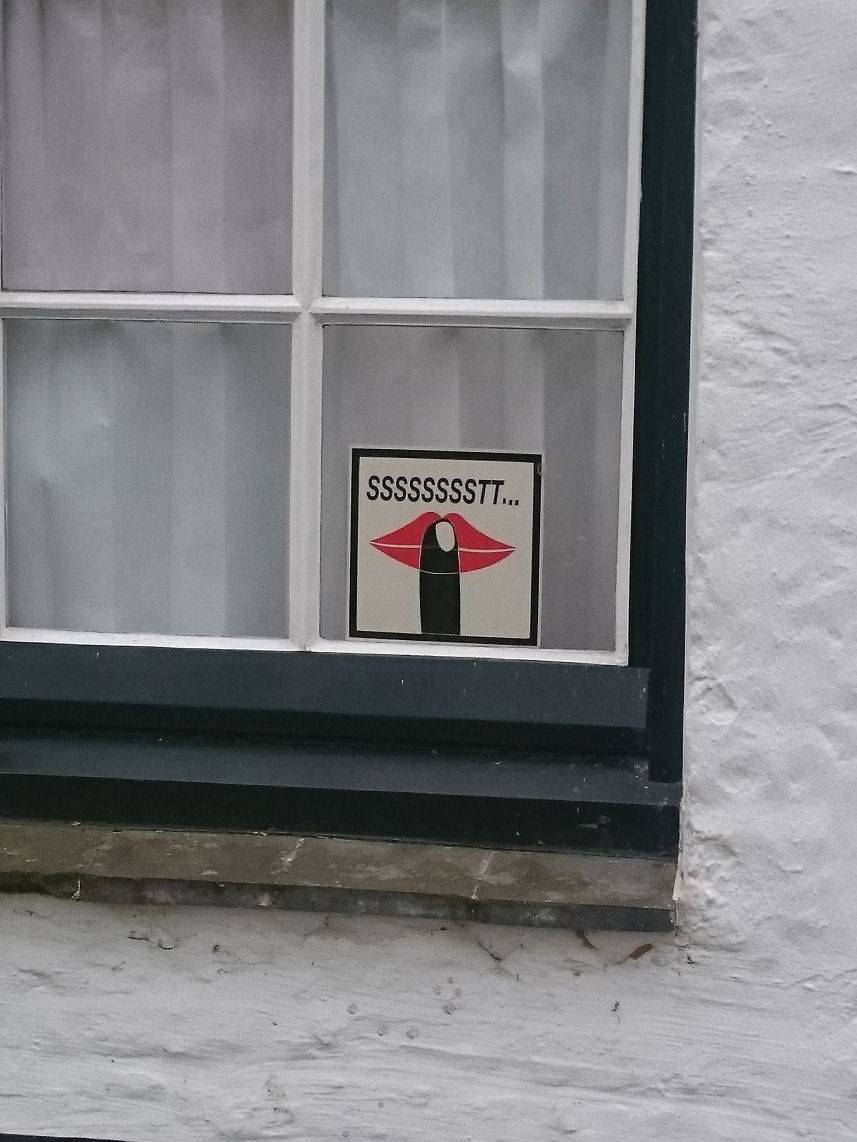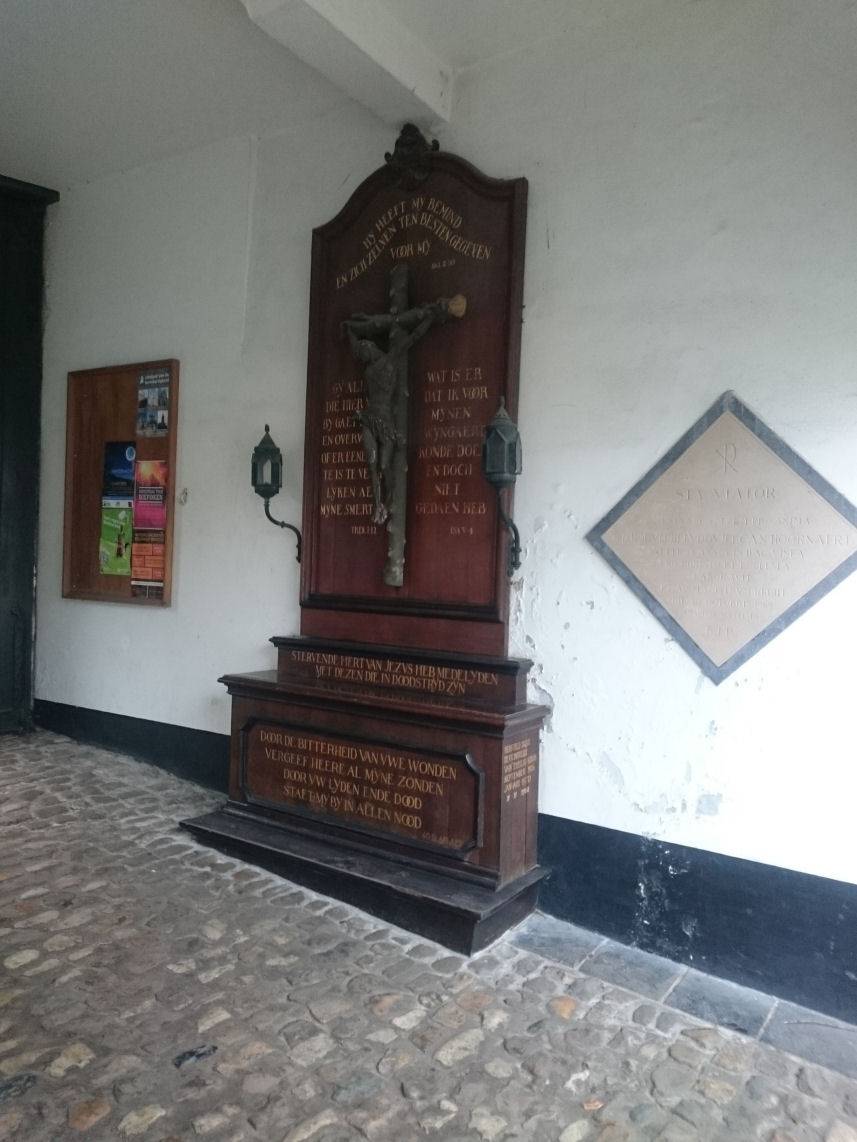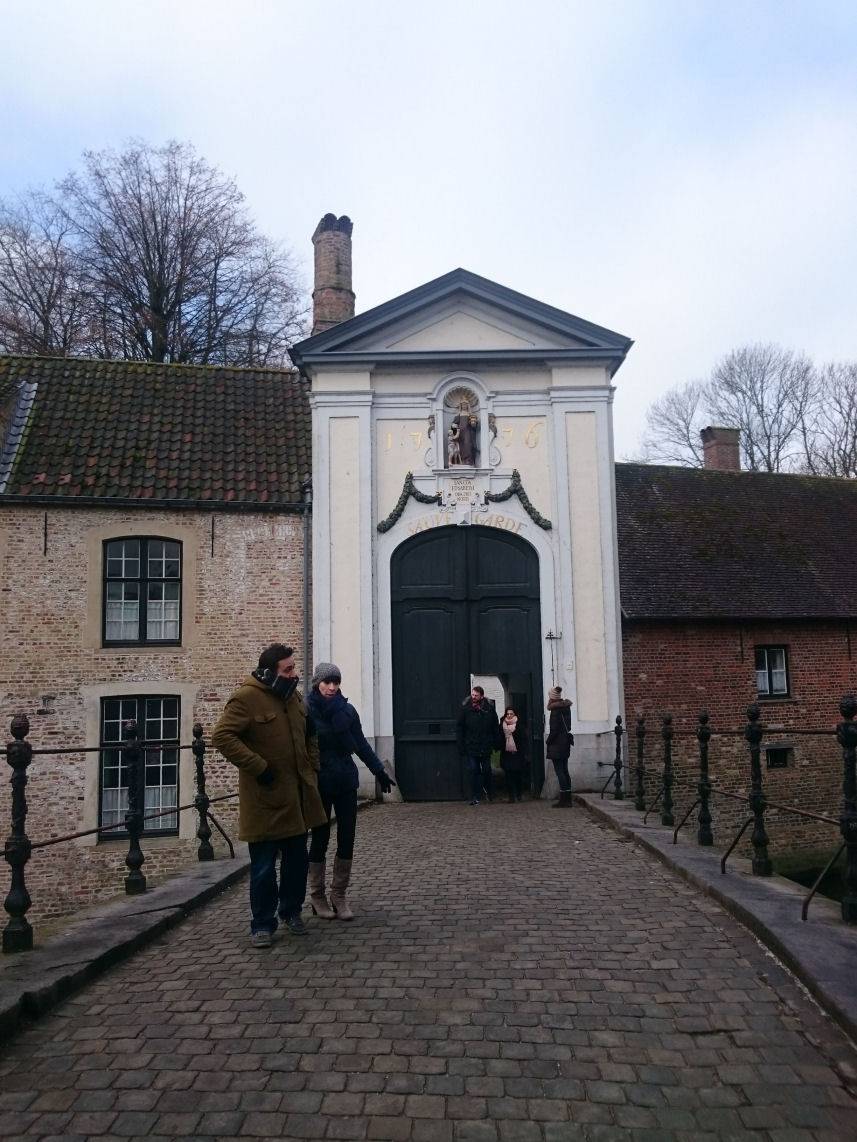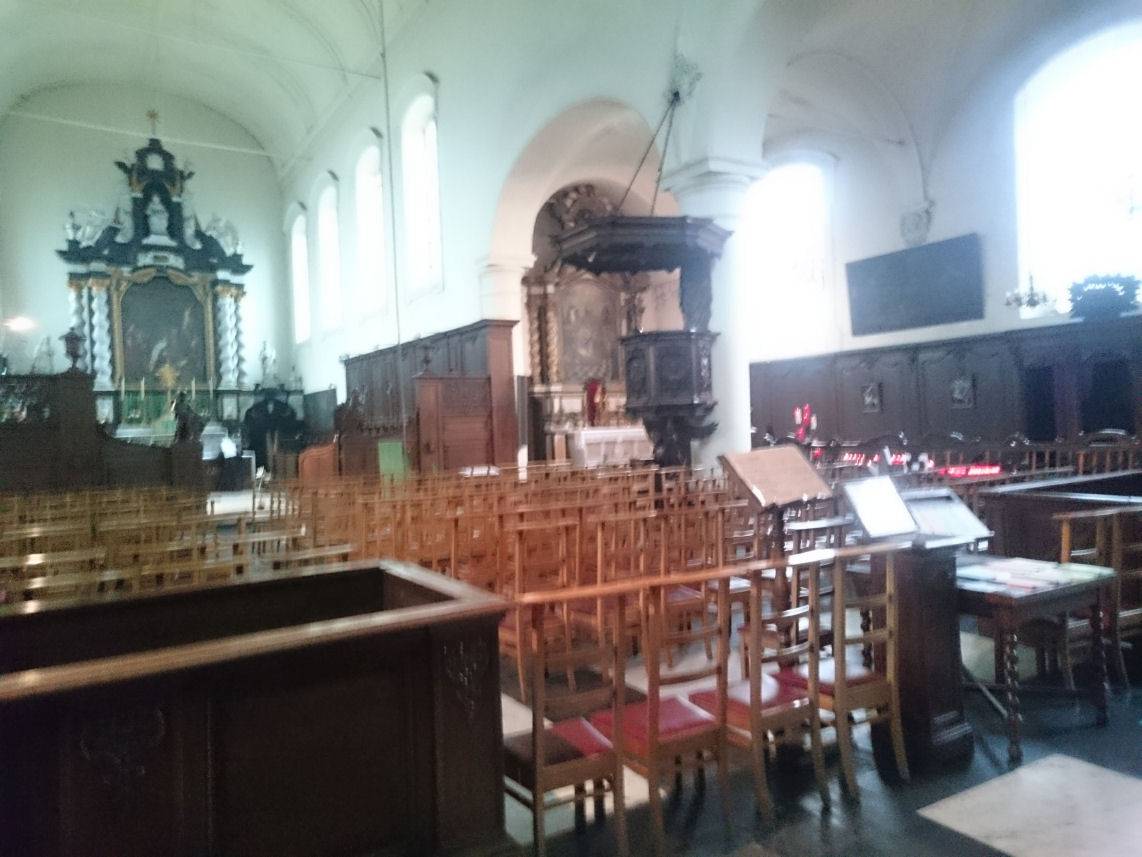The Jeruzalemkerk is the strangest building in Bruges. It was built by a wealthy Italian, a son of the Adornes family who had settled in Bruges. In the 1400's, he travelled to Jerusalem. When he returned he decided to recreate the Church of the Holy Sepulchre here in Flanders.
The old wooden door creaks open. Every time I have visited the church I have had it to myself. Inside is dark, paintings blackened by age on the walls. In the middle is a big, black tomb. Adornes is buried in here with his wife and their images are carved on the lid.
It must have been a weird feeling. Seeing yourself being carved, knowing you are going to end up underneath it. On show. When one of you dies then the other one knows, you are going to get stuck in there with him in a few years time. It's easy to say it was a different age but how can you not be bothered by that? How do you feel knowing that your tomb is all ready and waiting there for you with your other half already inside, slowly turning to a skeleton. Do you ever think "I am getting in there soon with him"?
The other thing you can't not notice is the altar. It's a big lump of rock carved into the shape of a hill. It's topped by three crosses that are damn near life-size. Golgotha. There are skulls carved into it, as though abandoned and lying in the mud. Also carved into it are tools.
I didn't get it at first. Why has someone carved pliers and a hammer and a ladder? They look random, like a builder has gone on a tea break. And then you see other things. A flail. A whip. Dice. A sponge on a stick. A spear. These are the Arma Christi, the Weapons of Christ, and Belgium is full of legends about them.
Behind the altar is another chapel. In the floor is a flagstone carved with the Jerusalem cross and hanging on the wall is a painting of the Mandylion of Edessa, another relic that was possibly the origin of the Shroud of Turin. In the back is a tiny, gated doorway. So small you need to crouch. It opens into a cell with a full size statue of a crucified Jesus lying on a slab, eyes wide open.
It's a weird place. It feels like it has been made up. The official story says Adornes returned from the Holy Land and rebuilt what he saw in Jerusalem. But that makes no sense. If the Jeruzalemkerk is what he saw, then he saw the Arma Christi, a collection of relics that even Hitler hunted, he maybe saw the Mandylion of Edessa (or some other shroud artefact) and he saw the tomb of an unresurrected Christ. Or, he built a church full of very weird and hard to explain symbolism. Either way, it's something out the pages of a novel.
The Jeruzalemkerk features in In Bruges. It's used as a stand-in for the Church of the Holy Blood which refused permission to film. The Adornes family obviously have a sense of humour.
I love the Jeruzalemkerk and, if I am honest, was the main reason I came back to Bruges. The rest of the Adornes Domain is worth wandering around, too. The Scottish Lounge has the cheapest cup of coffee in Belgium and a damn fine Madeira sponge cake. Comfy armchairs and a warm fire.
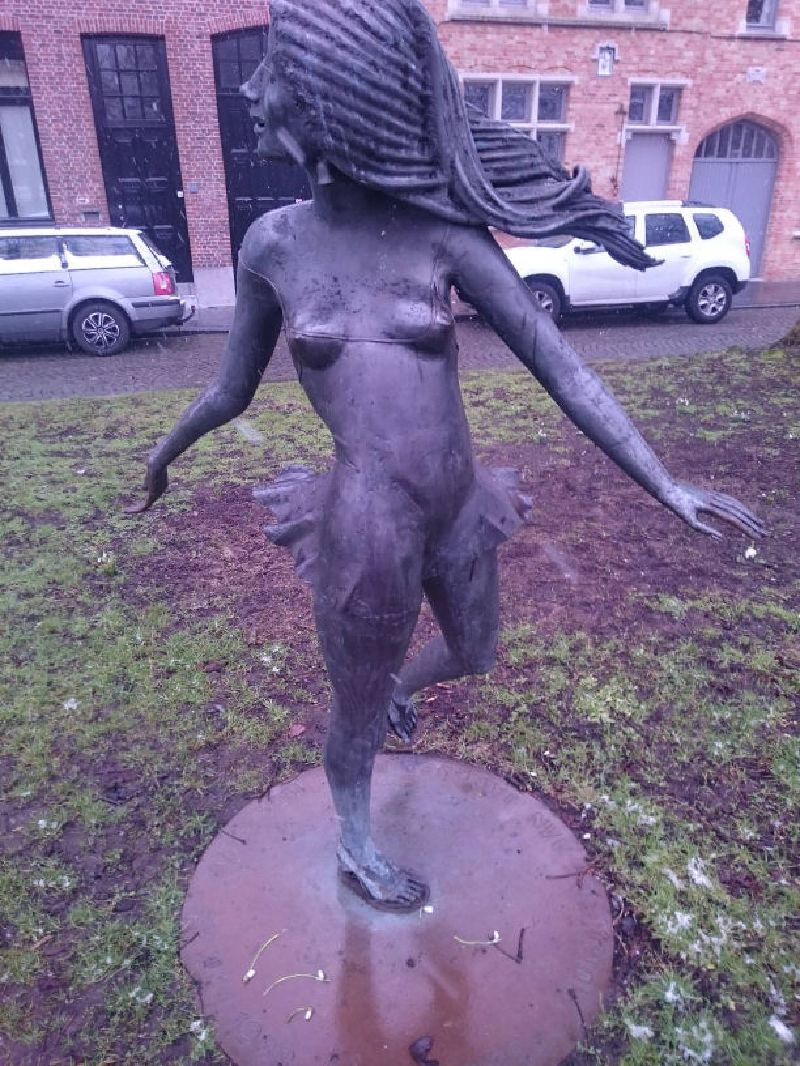 Bronze statue by an old quaysude
Bronze statue by an old quaysude
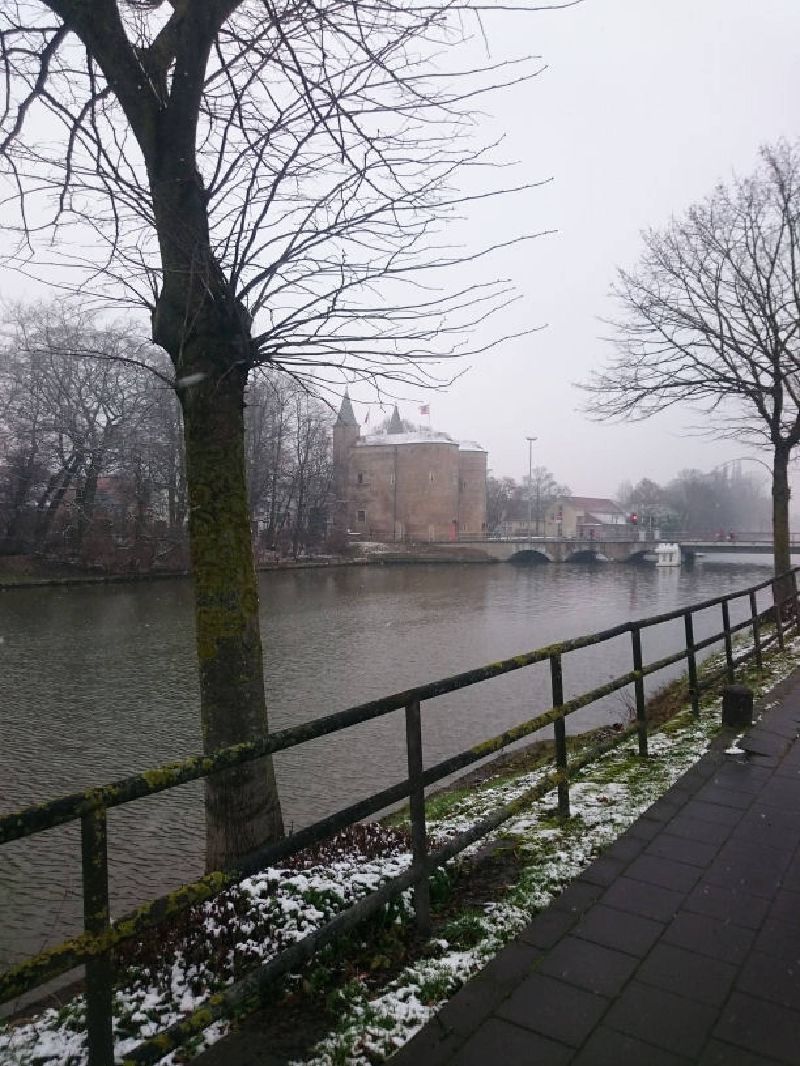 Katelijnpoort
Katelijnpoort
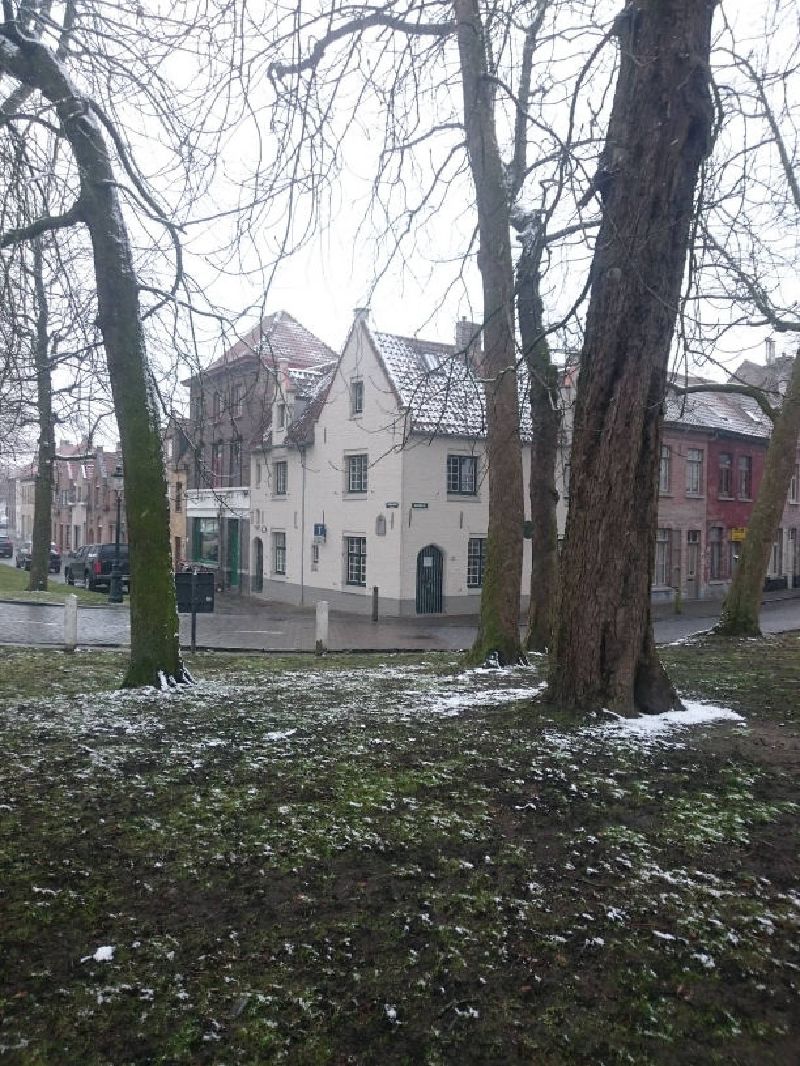 Houses near the canal
Houses near the canal
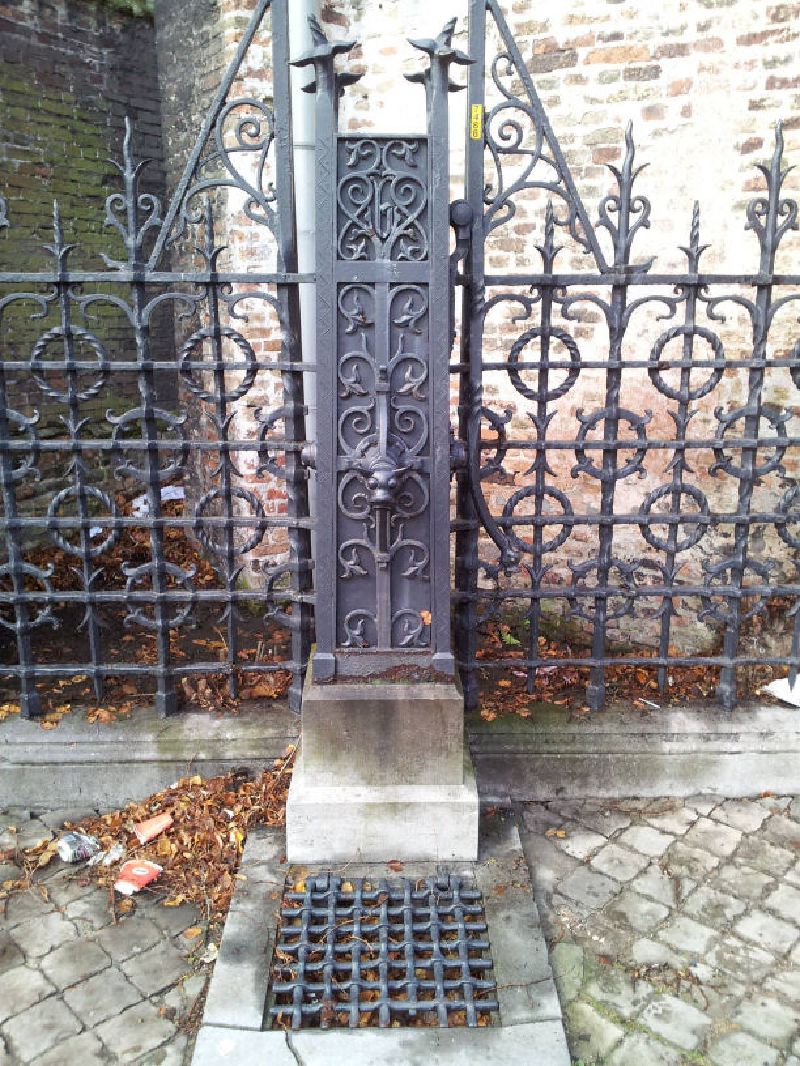 Water pump
Water pump
